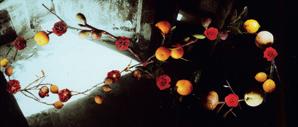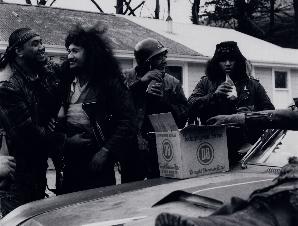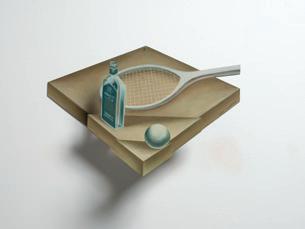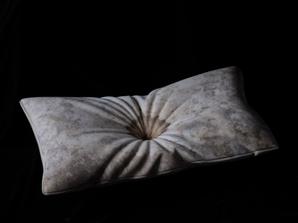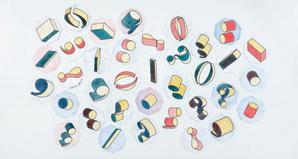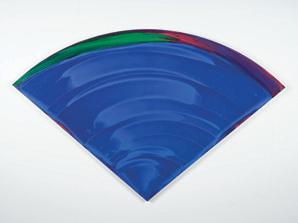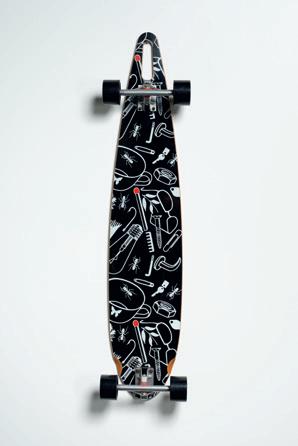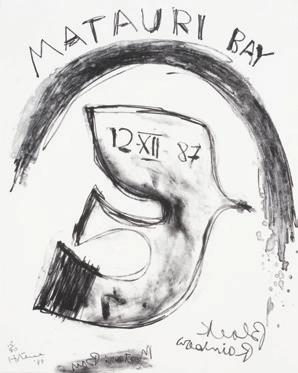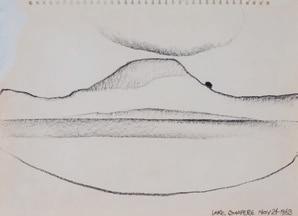

STYLE BY NAME STYLE BY NATURE
By Champion Super Sire Savabeel, a regally bred filly.Savabeel fillies are highly sought after – jewels in the thoroughbred crown. This is your opportunity to be involved in a filly of substance – she’s formidable, from family to physique.
This filly has a magnificent presence about her. Composed, cool and confident. Her physical strength and attitude makes her exactly the type filly to serve it up to her opposition on the track. You see this in everything she does.
She’s out of the winning Iffraaj mare Style By Design – a stakes’ performer at two and at three – that’s the same dam-sire as our mighty mare Melody Belle, winner of a record 14 Group 1’s. Savabeel is one of the world’s best sires – Te Akau’s success with his progeny is unparalleled. We have won 45 stakes’ races, including 13 at the elite Group 1 level with Savabeel’s progeny. That means over 30% of Savabeel’s Group 1 winners have been purchased/ trained by us: dual Horse of the Year Probabeel, who won four Australian Group 1 races and the Karaka Million double; NZB Filly of the Year Amarelinha; Prise De Fer; Sword of Osman, Hall of Fame, The Perfect Pink, Savy Yong Blonk, and three current stallions Embellish, Noverre and Cool Aza Beel.

It’s easy, fun and affordable to race a horse with NZ’s No.1 team. Te Akau has won 175 races in NZ this season – over double any other stable. We’ve also won 35 Group/Listed races and almost $9 million in prize money for our owners. If you want to experience the thrill of racing, Te Akau is the team for you. Call or email us now – you will love our friendly, professional stable with world class communication.

WE CAN’T WAIT TO HEAR FROM YOU –
A 10% share is $36,000+GST
– a 5% share is $18,000+GST
– a 2.5% share is $9,000+GST
This includes pedigree research/analysis & sale expenses at cost, plus full pre-purchase veterinary inspection & x-ray examination. Your share of transport, insurance & Karaka Million entry additional. Ongoing costs per month approx. $420 +GST per 10% share. Full disclosure document is available on request.

SHARES ARE SELLING QUICKLY Savabeel/Style By
Design filly By Neil Ieremia
By Neil Ieremia



Every crisp an edible masterpiece



Twenty is a compilation of twenty artworks by twenty different artists, each promising unique value in today's secondary market. Market sentiments can shift suddenly and, in retrospect, these changes often seem inevitable. This tightly-curated live sale highlights artists whose value is rapidly increasing. It presents a fleeting opportunity to acquire a piece from 'the one that got away' before they truly do get away.
The sale includes works by Louise Henderson, Gretchen Albrecht, Fiona Pardington, Andrew McLeod, Peter Stichbury, Richard Killeen, Olivia Spencer Bower, and Jacqueline Fahey, among others. This event marks Webb's first art auction in Wellington. Prior to the sale, viewings will be held in both Auckland and Wellington.
If you have any enquiries about the sale please get in touch with our specialists.

15 Williamson Ave, Ponsonby, Auckland
goodform.co.nz
 Designer Furniture, Lighting and Objects
Karimoku Case Study –A-DT02
Dining Table by Keiji Ashizawa, N-DC01
Dining Chair
and N-DC01
Dining Chair by Norm Architects.
Photography: Jonas Bjerre-Poulsen
Designer Furniture, Lighting and Objects
Karimoku Case Study –A-DT02
Dining Table by Keiji Ashizawa, N-DC01
Dining Chair
and N-DC01
Dining Chair by Norm Architects.
Photography: Jonas Bjerre-Poulsen
14.08.23 Works of Art Entries Invited
Webb’s invites entries for our forthcoming Works of Art auction, set to take place in August.
The March iteration of our Works of Art auction saw fantastic prices realised for works by Tony Fomison, Peter Stichbury, Adele Younghusband, Fiona Pardington, Don Binney, Ian Scott, and others. The auction culminated in a sales total of $3.2 million.
An early August consignment of note is Gordon Walters Colour Study for ‘Aotea’. The work features the artist's iconic monochrome bars that rhythmically oscilate from top to bottom. Each is a geometric abstraction of the koru motif as an exploration of colour, form and scale.
This painting will be presented alongside other impressive works by Colin McCahon, Philip Clairmont, and Robin White. Works of Art is long established as the finest market presentation of high-value artworks. If you are thinking of bringing any artworks to market, please contact our team of specialists for a complimentary appraisal.
 Gordon Walters, Colour Study for 'Aotea', 1983, gouache on paper, 340 × 260mm est $80,000 — $120,000
Gordon Walters, Colour Study for 'Aotea', 1983, gouache on paper, 340 × 260mm est $80,000 — $120,000
Colophon
Advertising & PR
Paul Evans Managing Director paul@webbs.co.nz
+64 21 866 000
Christine Kearney General Manager christine@webbs.co.nz
+64 27 929 5604
Karen Rigby Business Manager karen@webbs.co.nz
+64 22 344 5610
Claire Byrom-Jones Senior Marketing Executive claire@webbs.co.nz
+64 22 029 5611
Creative Direction
Olivia Woodgate Head of Creative design@webbs.co.nz
+64 22 323 4919
Printer
Bluestar
Head Office Art Auckland Art Wellington
Edition of 1,800
Offset Printed, 90 pages
300gsm Matt Art
150gsm Matt Art
Freely distributed to subscribers or available at select public art spaces and hospitality venues.
Charles Ninow Director of Art charles@webbs.co.nz
+64 21 053 6504
Tasha Jenkins Manager, Art tasha@webbs.co.nz
+64 22 595 5610
Charles Tongue Valuations Specialist valuations@webbs.co.nz
+64 22 406 5514
Jo Bragg Administrator, Art art@webbs.co.nz
+64 9 529 5609
Hannah Crichton Registrar, Art registrar@webbs.co.nz
+64 21 113 5001
Georgina Brett Cataloguer, Art cataloguer@webbs.co.nz
+64 9 529 5609
Mark Hutchins-Pond Specialist, Art mark@webbs.co.nz +64 22 095 5610
33a Normanby Road Mount Eden Auckland, 1024
23 Marion Street Te Aro Wellington, 6011 webbs.co.nz

At Home.


Kia ora koutou, welcome to the June iteration of Select. This catalogue presents our first standalone Select offering and we are thrilled to share it with you. Select has been one of our most anticipated auction events, and due to this success has become its own premium category. The sale showcases strong artworks that have been hand-picked by our team of specialists. This particular collection is a fantastic way to begin a new era.
As always, the catalogue includes a fantastic range of works by both well-established artists and those on the rise. A range of mediums are presented, from photographic works by Ans Westra, to a beautiful 1949 work on paper by Juliet Peter, to the silk Vermillion Dream by contemporary artist Rozana Lee. Personal favourites are a trio of Joanna Margaret Paul works painted in sumptuous palettes and a pair of striking Robyn Kahukiwa paintings first exhibited in London. Other highlights include fantastic paintings by Gretchen Albrecht, Richard Killeen, Ian Scott and Para Matchitt. We are also pleased to offer a number of works from the Estate of Ans Westra, such as two striking Megan Jenkinson photographs.

Within this catalogue we are delighted to present The K’ Road Collection. Encompassing 26 works, this single-owner collection is an ode to the Karangahape Road art community in Auckland and captures a nostalgia for exhibitions gone by. Our Director of Art Charles Ninow expands on his own experience of K’ Road with a wonderful introduction to the collection. Within this selection of works are standout examples of some of this country's finest artists — Liz Maw, Ralph Hōtere, Shane Cotton, Julian Dashper, Tony Fomison, Michael Parekōwhai and more.
Here at Webb’s we constantly strive for compelling new ways to share art, and we will be holding two bespoke themed auctions this year. The first, titled Twenty, features 20 works by 20 artists whose investment level has skyrocketed recently. Featured artists include A. Lois White, Louise Henderson, Fiona Pardington and Andrew McLeod. We are very excited for Twenty to be the first live art auction held at our Wellington premises. Later in the year we will present Pencil Case Painters, an auction celebrating Canterbury artists Tony de Lautour, Saskia Leek, Bill Hammond, Peter Robinson, Séraphine Pick and Shane Cotton. The 'pencil case' moniker references the wonderful doodle-like imagery created by these artists in the 1990s.
It is an exciting moment to share these specially selected artworks with you and we hope you enjoy perusing the following pages. Highlights from Select will be on view at our Wellington gallery from 1–3 June, with the full selection on view in our Auckland gallery from 7–12 June. To launch the viewings in both cities we are presenting a special talk, Art in Aotearoa: A Brief History, which will discuss how works from Select reflect our local and national art history. The Wellington talk will be presented by Dr. Chelsea Nichols, Senior Curator at the Dowse Art Museum, at 6pm on 31 May; and the Auckland talk will be presented by art historian and writer Maya Love at 6.30pm on 6 June. The auction will take place at our Auckland gallery on Monday 12 June at 6.30pm.
If you are unable to view the works in person or have any further questions about the auction, please get in touch. We would love to hear from you.
Launch Event
Art in Aotearoa: A Brief History
Senior Curator at the Dowse Art Museum Dr. Chelsea Nichols will offer a condensed overview of local art history in relation to highlights from the Select catalogue. Please RSVP to karen@webbs.co.nz
Viewing Times
Thursday 1 — Friday 2
Saturday 3
Wellington
Wednesday 31 May 6pm
Event
Art in Aotearoa: A Brief History
Tâmaki Makaurau-based writer and art historian Maya Love will discuss how works from the Select catalogue reflect our country's art history. Please RSVP to registrar@webbs.co.nz
Viewing
Wednesday 7 — Friday 9
Saturday 10 — Sunday 11
Viewing on Request
June June
Auckland
10am — 5pm 11am — 3pm
Tuesday 6 June 6.30pm
June June
10am — 5pm 10am — 4pm
Monday 12 June 10am — 5pm
Auction
Monday 12 June 6.30pm
Plates 160 Lots
Specialist Enquires
Charles Ninow Director of Art charles@webbs.co.nz
+64 21 053 6504
Tasha Jenkins Manager, Art tasha@webbs.co.nz
+64 22 595 5610
Wellington Office
Mark Hutchins-Pond Specialist, Art mark@webbs.co.nz
+64 4 22 095 5610
Karen Rigby Business Manager karen@webbs.co.nz
+64 22 344 5610
Condition Reports
Hannah Crichton Registrar, Art registrar@webbs.co.nz
+64 21 113 5001
Georgina Brett Cataloguer, Art cataloguer@webbs.co.nz
+64 9 529 5609
NOTE

 1 Richard Killeen, Repetition 2018 inkjet print on paper, 1/1 signed, dated and title inscribed 420 × 297mm
1 Richard Killeen, Repetition 2018 inkjet print on paper, 1/1 signed, dated and title inscribed 420 × 297mm










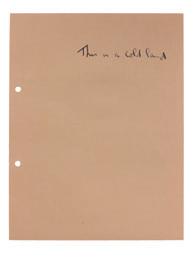














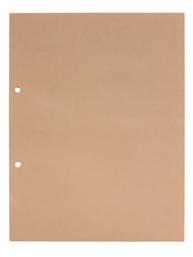

 3 Para Matchitt, Te Pakanga XXII - Ka Whakatika, Ka Whakatika 1974 ink on paper 480 × 670mm EST $6,500 $8,500
3 Para Matchitt, Te Pakanga XXII - Ka Whakatika, Ka Whakatika 1974 ink on paper 480 × 670mm EST $6,500 $8,500
Dame Robin White (Ngāti Awa) is widely recognised as one of Aotearoa’s most celebrated artists. White studied at Elam School of Fine Arts in the 1960s, where she was taught by Colin McCahon. In her earlier works, White’s focus on small-town, rural New Zealand, and her hard-edged, realist style established her as a key figure in the 1970s regionalist movement. White’s distinctive artworks are rooted in the artistic lexicon of New Zealand and are sought avidly by public and private collectors alike.
The choice of relocating to Kiribati, a group of atolls in the Pacific, inspired a profound change in White’s practice. Driven by necessity due to the equatorial conditions, and drawing on her cross-cultural lived experiences, White turned to hand-coloured woodcut prints, as they were a more manageable artform and wood was an easily obtained resource.
White’s new way of life in Kiribati consequently stylistically shifted to creating rudimentary stylised compositions featuring captioned text to further detail the scene. White sought a compassionate thread within her art; the prints are an example of how she wove principles from Western and Moana Oceania art practices in harmony. The prints emphasise White’s environmental concerns of the land its ecology.
Her compositions recount everyday life, depicting the people White met, and how her everyday environment came to inspire her practice. In these flat, colourful renderings, we see a parallel with White’s regionalist paintings, and the common narrative thread of exploring the land and lives of people.
White’s works, such as those offered here, are rich with lived experiences. In each of the four prints, there is a nod to the landscape and the local people – here, Florence and Brigid – who were an active part of White’s life. Flora and fauna, as well as conch shells and sea scallops, frame the images, grounding them in the Pacific.
These works are an excellent example of the pivot White’s practice undertook, and of her fluidity as an artist.
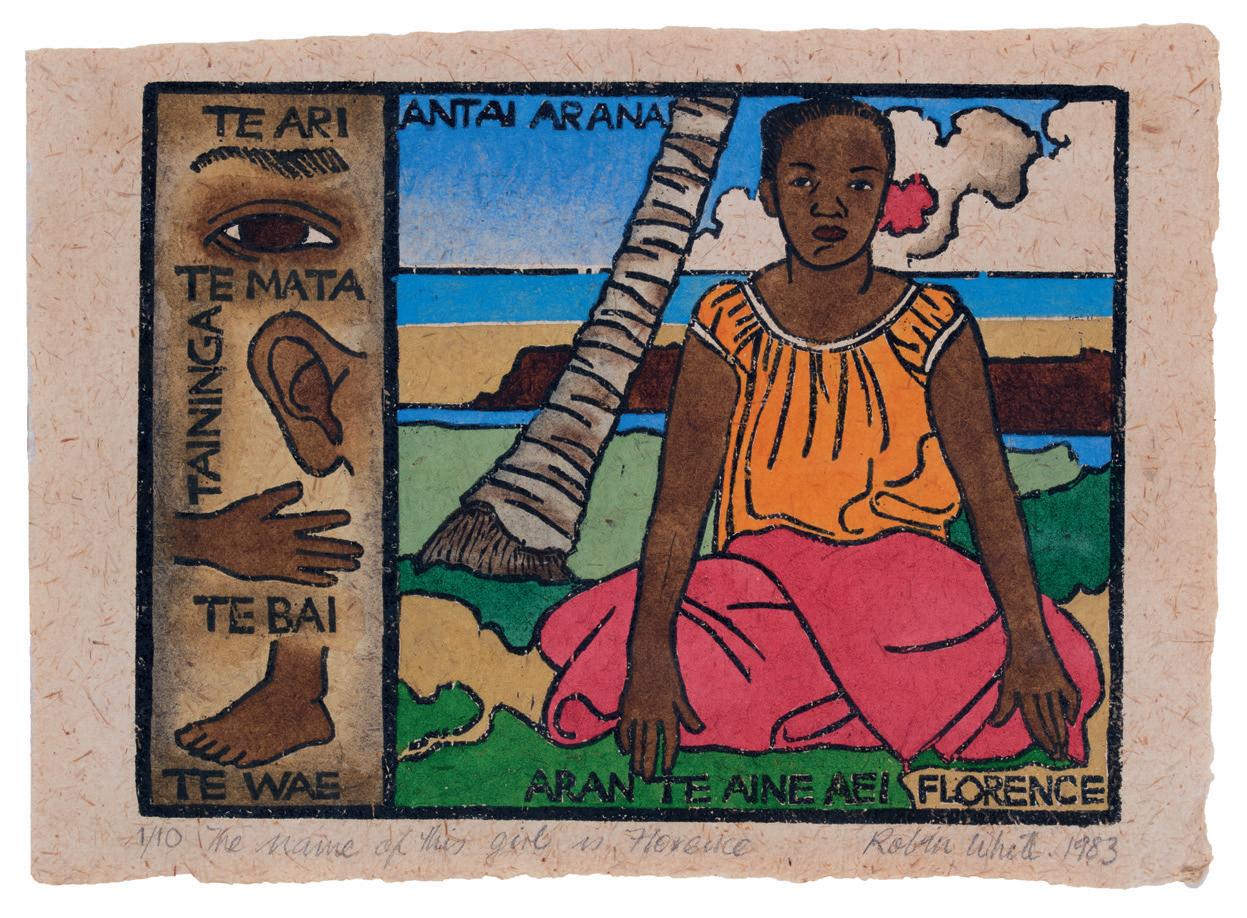


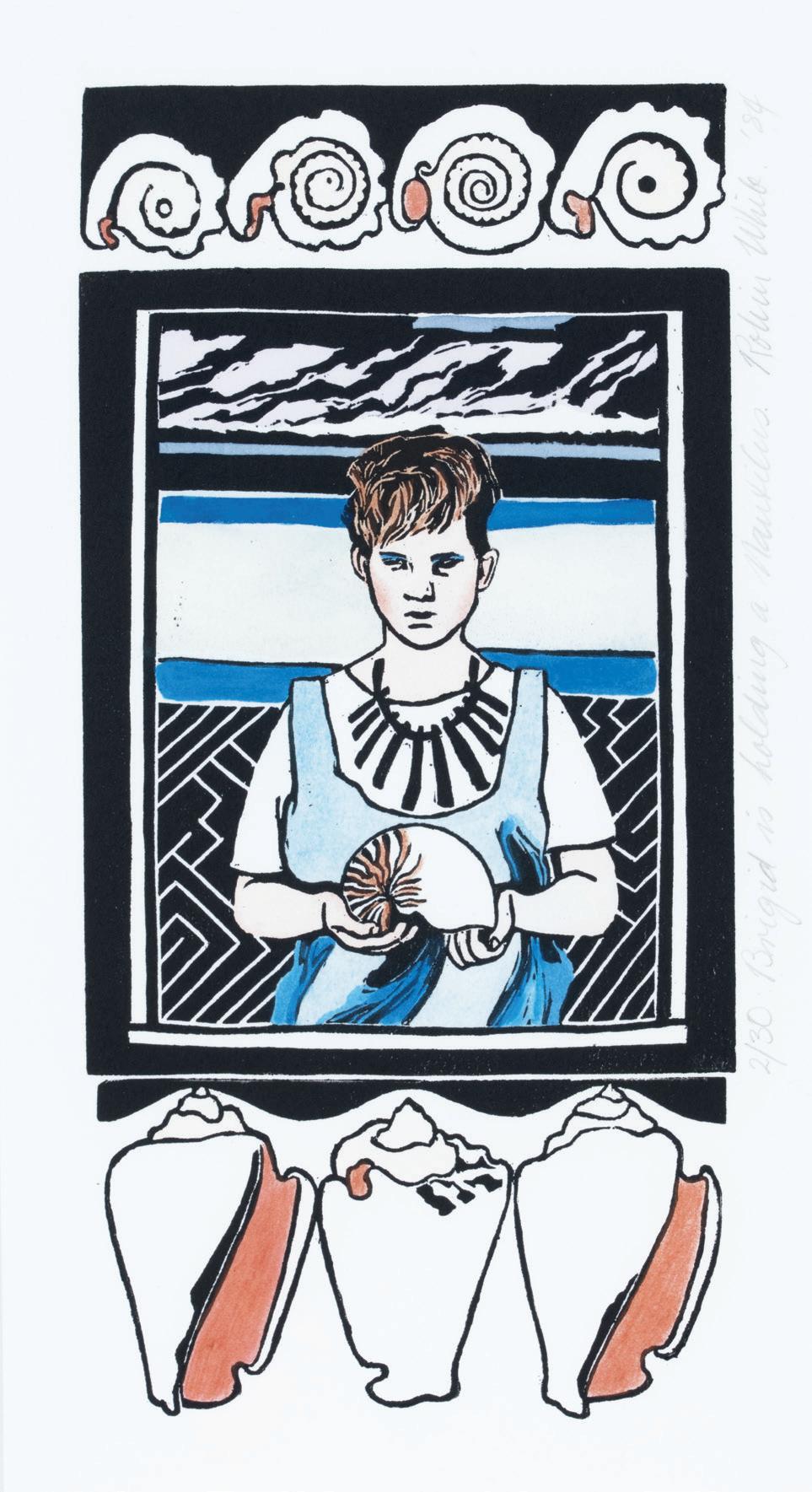
 6 Robin White, Brigid Holiding a Nautilus 1984 hand coloured woodcut on paper, 2/30 signed, dated and title inscribed 325 × 185mm EST $1,500 $2,500
6 Robin White, Brigid Holiding a Nautilus 1984 hand coloured woodcut on paper, 2/30 signed, dated and title inscribed 325 × 185mm EST $1,500 $2,500

 8 Robin White, This is Brigid 1984 hand coloured woodcut on paper, 2/30 signed, dated and title inscribed 300 × 185mm EST $1,500 $2,500
8 Robin White, This is Brigid 1984 hand coloured woodcut on paper, 2/30 signed, dated and title inscribed 300 × 185mm EST $1,500 $2,500

 10 Andy Lelesi'uao, Ubiquitous People of Erodipolis 2016 acrylic on canvas signed 1520 × 1525mm (overall) EST $16,000 $18,000
10 Andy Lelesi'uao, Ubiquitous People of Erodipolis 2016 acrylic on canvas signed 1520 × 1525mm (overall) EST $16,000 $18,000

 12 Max Gimblett, Tempest 2016 screenprint on paper signed, dated and title inscribed 550 × 570mm EST $2,000 $4,000
12 Max Gimblett, Tempest 2016 screenprint on paper signed, dated and title inscribed 550 × 570mm EST $2,000 $4,000
 14 Bill Hammond, Singer Songwriter II
14 Bill Hammond, Singer Songwriter II
 15 Ian Scott, Small Lattice No. 419 2010 acrylic on canvas signed and dated 760 × 760mm
15 Ian Scott, Small Lattice No. 419 2010 acrylic on canvas signed and dated 760 × 760mm




16 Kate Small, White Cross 2009 oil on board signed and dated 700 × 700mm
EST $6,500 $8,500
17 Stephen Bambury, Olive/Blue 1979 oil on canvas signed, dated and title inscribed 460 × 460mm
EST $6,000 $10,000
18 Stephen Bambury, Area Transmute 1980 aquatint on paper, 1/40 signed, dated and title inscribed 500 × 700mm
EST $1,000 $2,000
19 Gretchen Albrecht, Night Geometries 1993 lithograph on paper, 7/138 signed and dated 170 × 270mm
EST $2,000 $4,000
20 Judy Millar, untitled 2002 acrylic on aluminium signed and dated 770 × 570mm

EST $8,000 $12,000
21 Judy Millar, untitled 2020 oil on canvas 965 × 555mm

EST $11,000 $15,000
22 Judy Millar, Untitled III (red and green) c2007 oil and acrylic on paper 565 × 755mm
EST $4,000 $8,000


 23 Milan Mrkusich, untitled 1986 oil and pastel on canvas signed and dated 580 × 460mm EST $8,000 $12,000
23 Milan Mrkusich, untitled 1986 oil and pastel on canvas signed and dated 580 × 460mm EST $8,000 $12,000

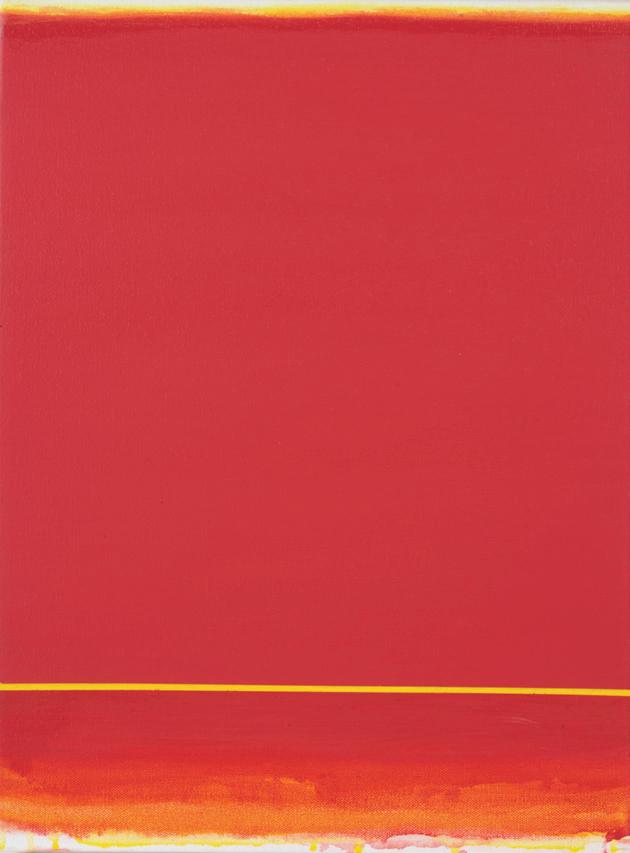

 25 Shingo Francis, Beyond the Periphery (Orange Tear) 2018 acrylic on canvas signed, dated and title inscribed 410 × 310mm EST $3,500 $5,500
26 Shingo Francis, Beyond the Periphery (Primary-Yellow) 2016 acrylic on canvas signed, dated and title inscribed 410 × 310mm EST $3,500 $5,500
27 Shingo Francis, Blue Seems Further 2017 acrylic on canvas signed, dated and title inscribed 410 × 310mm EST $3,500 $5,500
25 Shingo Francis, Beyond the Periphery (Orange Tear) 2018 acrylic on canvas signed, dated and title inscribed 410 × 310mm EST $3,500 $5,500
26 Shingo Francis, Beyond the Periphery (Primary-Yellow) 2016 acrylic on canvas signed, dated and title inscribed 410 × 310mm EST $3,500 $5,500
27 Shingo Francis, Blue Seems Further 2017 acrylic on canvas signed, dated and title inscribed 410 × 310mm EST $3,500 $5,500
Joanna Margaret Paul
Two Still Lifes and a Portrait
The three works presented here showcase two of Joanna Margaret Paul’s (1945–2003) most frequently documented subjects: still lifes and people. Paul responded to these ‘ordinary’ scenes through a multitude of mediums — drawing, painting, photography, film and poetry. Regardless of the subject matter and discipline, there is a sense of intimacy and atmosphere imbued within all of Paul’s works.

Paul was born in Hamilton to artistic and literary publishers Janet (who was also an artist) and Blackwood Paul. Paul's mother was a strong artistic influence; she grew up in a liberal environment that valued and encouraged creativity. After spending time in London, where she was influenced by international artists, she returned to New Zealand and enrolled at Elam School of Fine Arts. There she was taught by Colin McCahon and Greer Twiss and studied artists such as Willem de Kooning, whose work was to inform her practice throughout her life.1
Paul consistently pushed the boundaries and existing conventions to challenge the disciplines she worked in. She rejected the idea of conventional framing devices within drawing and painting, and treated drawings not as a preliminary exercise but artworks in their own right. By not being constrained or guided by a particular medium, Paul was able to continually explore her relationship with the world around her in a way that felt fresh and new, even when revisiting the same subject matter.

Red is an oil painting by Paul that is simply delightful to look at. A candy-coloured palette of reds, pinks and bluish-purples creates a scene that feels almost unreal — like gazing through rose-tinted glasses. The bowl, flowers and candlesticks are pleasantly organic in shape. The overall atmosphere of the work is one of warmth, as the colour in the title might suggest. The two works on paper appear to be brief moments captured, drawn perhaps in situ: the momentary expression of a sitter or tea about to be served. Again, the strong colours – garish green for the tablecloth and bright blue for the figure’s t-shirt – give the works a dream-like effect. This portrait shows Paul’s antipathy towards the convention of ‘finishing’ an artwork; here leaving half the figure outlined only in graphite.
The recent retrospective Imagined in the Context of a Room, held at City Gallery Wellington Te Whare Toi, acknowledged the legacy of Paul’s multidisciplinary practice. While Paul had success as an artist and at least one survey exhibition during her lifetime, she has not previously had great public recognition. This was perhaps due to Paul’s unwillingness to engage in self-promotion and pursue a ‘career’ in art. This ideal was endorsed by the 1970s feminist movement Paul engaged with later in life. The movement presented Paul with a more holistic idea of art than she had previously witnessed, and expanded the ideas of what art was. While artwork that drew on women’s experiences had previously been seen as lesser, the feminist movement celebrated and privileged this topic.2

Paul’s amplification of intimate domestic settings affirms that women’s lived experiences are important and worthy of preserving through art. Her loyalty to her subject matter and multidisciplinary approach quietly and consistently pushed the boundaries of art in Aotearoa in a way that is still relevant today.
 32 Para Matchitt, Ruaururu
1963 oil on board
signed and dated 600 × 620mm
32 Para Matchitt, Ruaururu
1963 oil on board
signed and dated 600 × 620mm

34 Séraphine Pick, untitled 2005 oil on linen signed and dated 610 × 510mm

EST $10,000 $16,000
PROVENANCE Estate of Ans Westra, Wellington.
35 Patricia France, untitled oil on board signed 510 × 490mm

EST $6,000 $10,000
36 Brendan Huntley, untitled 2015-16 oil on canvas on paper signed and dated 1130 × 970mm
EST $4,500 $6,500
37 Arie Hellendoorn, Flow Though 2011 acrylic on canvas 1120 × 1150mm
EST $2,000 $4,000
PROVENANCE Estate of Ans Westra, Wellington.
38 Jeffrey Harris, On the Beach 1975 oil on canvas signed and dated 560 × 770mm
EST $25,000 $45,000

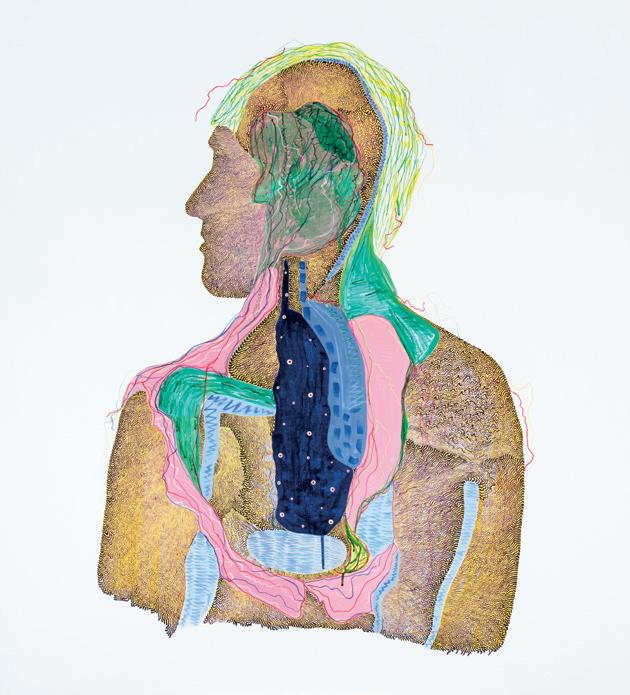

Reflecting on the artist’s life spent as a forestry worker, Dick Lyne (1927–2014) picked up a paintbrush for the first time at age 65. With much of this time spent on Te Rohe Pōtae (King Country) and Matakana Island, these locations became a fixture of the artist’s work.
The three works by Lyne featured in this catalogue showcase the highly trained eye and skilled hand of this self-taught painter. Bush Logging Scene 1953 at Taurewa National Park Centre Nth Island presents a group of loggers hard at work, while the other two paintings present a more apparent conjunction between agriculture and nature; a theme that captivated Lyne throughout his life. The vibrant colours and flattened imagery create a wonderful folk-art feel within Lyne’s work.
Trucks, cars, and tram tracks pierce the natural landscapes of Lyne’s captivating paintings. The people and automobilia in each are always dwarfed by their surrounding flora and fauna, suggesting that right at the intersection between wilderness and agriculture, there is Dick Lyne’s life — a life lived in awe of the majesty of our national forests and trees.
39 Dick Lyne, Bush Logging Scene at Taurewa National Park Centre Nth Island
1953 oil on board signed, dated and title inscribed 830 × 600mm EST $2,500 $5,000
40 Dick Lyne, Tram into Poakani Bush Block in Central Northland oil on board signed and title inscribed 600 × 835mm EST $2,500 $5,000


41 Dick Lyne, untitled oil on board signed 570 × 820mm EST $3,000 $5,000

 42 Leo Bensemann, Harry Courtney Archer oil on canvas 500 × 435mm
42 Leo Bensemann, Harry Courtney Archer oil on canvas 500 × 435mm

 43 Tony Fomison, Return to the Lake 1984 oil on canvasboard signed, dated and title inscribed 185 × 140mm EST $15,000 $25,000
43 Tony Fomison, Return to the Lake 1984 oil on canvasboard signed, dated and title inscribed 185 × 140mm EST $15,000 $25,000



 45 Peter Siddell, The Winter of '96 1996 oil on canvas signed, dated and title inscribed 225 × 280mm EST $5,000 $8,000
46 Peter Siddell, Sunday Service 1974 acrylic on canvas signed and dated 675 × 800mm EST $60,000 $90,000
47 Peter Siddell, Western Cloud 1996 pastel on paper signed and dated 330 × 495mm EST $8,000 $12,000
45 Peter Siddell, The Winter of '96 1996 oil on canvas signed, dated and title inscribed 225 × 280mm EST $5,000 $8,000
46 Peter Siddell, Sunday Service 1974 acrylic on canvas signed and dated 675 × 800mm EST $60,000 $90,000
47 Peter Siddell, Western Cloud 1996 pastel on paper signed and dated 330 × 495mm EST $8,000 $12,000



 49 Peter Peryer, Kiokio 1984 gelatin silver print 280 × 220mm EST $1,200 $1,800
50 Peter Peryer, Piupiu 1984 gelatin silver print 280 × 220mm EST $1,200 $1,800
51 Stephen Ellis, Stifle 2016 ink and correction fluid on paper 885 × 485mm EST $8,000 $12,000
49 Peter Peryer, Kiokio 1984 gelatin silver print 280 × 220mm EST $1,200 $1,800
50 Peter Peryer, Piupiu 1984 gelatin silver print 280 × 220mm EST $1,200 $1,800
51 Stephen Ellis, Stifle 2016 ink and correction fluid on paper 885 × 485mm EST $8,000 $12,000
EST $7,000 $10,000
PROVENANCE The

 53 Megan Jenkinson, untitled (Atmospheric Optics series) c2007 digital lenticular print on Polypropylene 880 × 1190mm
Estate of Ans Westra, Wellington.
53 Megan Jenkinson, untitled (Atmospheric Optics series) c2007 digital lenticular print on Polypropylene 880 × 1190mm
Estate of Ans Westra, Wellington.
Ans Westra
Documentary Photographs

“In my photography I’m looking for communication between people and the right moment. Catching the right moment in full swing. One that sums up an emotion.”1
In March of this year we lost one of Aotearoa’s most revered pioneers of documentary photography, Anna Jacoba (Ans) Westra. As a nation, her photographic oeuvre is highly significant to us for its historical content.



Ans Westra was 24 when she immigrated to this country in 1957 from Rotterdam, Holland. She settled in Wellington, where she gained work as a photographer with the School Publications Branch of the Department of Education, and Te Ao Hou, a magazine published by the Department of Māori Affairs. Ostensibly, being a foreigner became her artistic edge; she was able to show what was unique about life in Aotearoa from a unique perspective.
Westra was self-taught, and she preferred to use a medium-format, waist-level viewfinder camera. She believed this method was less obtrusive, and allowed for an intimate closeness, something she felt she couldn’t achieve with her eye behind a lens. This shaped what became her own distinctively recognisable, unposed and candid photographic style. This was unconventional approach during the mid-1960s, when staged illustrative compositions were the preferred norm.


Westra had an innate talent as a photographer, with an extraordinary gift for creating arresting images of deep emotion and connection. Her images are powerful in affect because of their pathos, and there is a deep respect present for the people she photographed. However, Westra’s work drew significant controversy for her portrayal of Māori. In 1964 she came under fire for work she had created for a School Bulletin publication, Washday at the Pa. The edition was, controversially, later withdrawn from distribution because it was said to reinforce existing stereotypes of Māori as impoverished.
Typically, Westra photographed everyday people, those not wealthy in material processions, as was the case for the family featured in Washday at the Pa. Westra wanted to show the warmheartedness of an emotionally rich family. These photos were taken over a period of five months, while she lived among the community of rural Māori families; it was her intention to document what everyday life was like from a perspective inside their world. Despite earlier controversy surrounding some of Westra’s work, her images are now considered an important part of the photographic and cultural history of Aotearoa, as is her indisputable legacy as a documentary photographer.
61 Ans Westra, A&P Show Carterton c1959 gelatin silver print 230 × 190mm
EST $2,500 $5,000
62 Ans Westra, untitled (Porirua, Wellington) gelatin silver print 231 × 190mm
EST $2,500 $5,000
63 Ans Westra, Ōpunake, Rātana Hui, Easter, 1965 1965
gelatin silver print signed 280 × 230mm
EST $3,000 $6,000
64 Ans Westra, Tikitiki, East Coast, 1963 1963
gelatin silver print signed, dated and title inscribed 340 × 330mm
EST $2,500 $5,000






 65 Gordon Walters, Geneaology screenprint on paper, edition of 100 indented with Walters Estate chop mark 1050 × 850mm
EST $8,000 $12,000
66 Gordon Walters, Tahi screenprint on paper, edition of 100 indented with Walters Estate chop mark 1084 × 800mm
EST $8,000 $12,000
65 Gordon Walters, Geneaology screenprint on paper, edition of 100 indented with Walters Estate chop mark 1050 × 850mm
EST $8,000 $12,000
66 Gordon Walters, Tahi screenprint on paper, edition of 100 indented with Walters Estate chop mark 1084 × 800mm
EST $8,000 $12,000


 68 Ralph Hōtere, Port Chalmers 1989 burnished steel signed, dated and title inscribed 600 × 670mm EST $35,000 $55,000
68 Ralph Hōtere, Port Chalmers 1989 burnished steel signed, dated and title inscribed 600 × 670mm EST $35,000 $55,000
70 Terry Stringer, untitled 1981 oil on aluminum signed and dated 400 × 595 × 225mm (widest points)

EST $6,000 $10,000
71 Stephen Bambury, untitled acrylic and 12 karat white gold on aluminium signed 170 × 350mm
EST $6,000 $9,000
72 Paul Dibble, The Innocents
2011 bronze signed and dated 250 × 400 × 200mm (widest points)
EST $10,000 $20,000
73 Terry Stringer, untitled 2009 bronze, 1/20 signed and dated 165 × 180 × 55mm (widest points)


EST $2,000 $4,000
PROVENANCE
The Estate of Ans Westra, Wellington.
74 Martin Selman, untitled carrara marble 300 × 600 × 100mm (widest points)


EST $4,000 $6,000
75 Paul Dibble, untitled bronze 1800 × 950 × 420mm (widest points)
EST $40,000 $60,000

Juliet Peter Toss Woollaston
Olivia Spencer Bower Adele Younghusband
The four works here by Adele Younghusband, Olivia Spencer Bower, Juliet Peter and Toss Woollaston are all works on paper created in the early-to-mid twentieth century. Spencer Bower, Woollaston and Peter were all members of The Group, a collection of artists who reacted against the way the Canterbury Society of Arts catered for popular taste and excluded younger, more innovative painters. Although Younghusband never joined The Group, her work has a similar modern feel.
Adele Younghusband came from an artistic family and her creative talent was evident from an early age; yet when she insisted on learning photography, it was done without her family’s support. She subsequently worked as a photographic retoucher in Hamilton while continuing to paint and draw in her spare time. It was not until her 40s that she made a serious commitment to painting.
Younghusband’s work is characterised by a variety of styles and phases. Painted in 1935, the study of karaka leaves and berries featured here appears to owe much to the early influences of the painting practice of her aunt, Fanny Osborne. Although its treatment may seem conventional when compared to more stylised interpretations Younghusband painted after she studied under George Bell in Melbourne in the late 1930s, her meticulous rendering of this botanical specimen is beautifully refined and surprisingly three-dimensional.

Olivia Spencer Bower’s uncompromising approach and total mastery of the watercolour medium established her as a significant figure in the New Zealand art world during the mid-twentieth century. Her first art teacher, A. T. Coles, insisted on three washes only, all subject-matter being resolved at that stage. Following this, Spencer Bower later said, “with a brush full of paint I had to think before I put it down.” It was the start of a lifetime discipline in the control of watercolour paint.
 76 Adele Younghusband, untitled 1935 watercolour on paper signed and dated 290 × 210mm EST $3,000 $5,000
77 Toss Woollaston, Westland 1961 watercolour on paper signed 375 × 555mm EST $8,000 $10,000
76 Adele Younghusband, untitled 1935 watercolour on paper signed and dated 290 × 210mm EST $3,000 $5,000
77 Toss Woollaston, Westland 1961 watercolour on paper signed 375 × 555mm EST $8,000 $10,000
In 1933 Spencer Bower began exhibiting with The Group, whose initial members were graduates from the Canterbury College School of Art. Membership later expanded to include other artists with modern inclinations. Spencer Bower remained a stalwart member of The Group, exhibiting with them regularly into the 1970s.
Landscapes were a popular subject for The Group; often sparsely rendered, appearing to extend eternally beyond the frame. Members often made excursions to the West Coast and the Mackenzie Country, capturing light as it fell across terrain, breaking scenes down to basic forms and simplified arrangements of colours that celebrated the painting process.
Juliet Peter exhibited with The Group after graduating from the Canterbury College School of Art in the late 1930s. From the rural Canterbury farms on which she grew up and later worked as part of the wartime Women's Land Service, Peter became an astute observer of the essential character of a chosen landscape. As her painting Church, Kaiapoi demonstrates, she was adept at depicting what she saw around her with charming directness and economy. The distinctively crisp, linear style Peter was well known for was honed during her years as a staff artist for the Department of Education, after she moved to Wellington.
A later member of The Group was Toss Woollaston. Regarded as one of the founders of modern art in New Zealand, Woollaston was part of the 1930s generation of artists who strived to establish a unique national culture, clearly distinct from that of Britain. Apart from two terms of study under Robert N. Field at the Dunedin Art School in 1932, Woollaston was essentially self-taught. He chose a unique and independent path throughout his career, remaining largely indifferent to the stylistic trends of late-twentieth century painting.
In his book The Far-Away Hills: A Meditation on New Zealand Landscape (1960), Woollaston acknowledges the influence of artist Flora Scales, who allowed him to study her notes from her training with Hans Hoffman, based on an analysis of Cézanne’s work. Woollaston subsequently adopted what he saw as Cézanne’s methodology of depicting the essence of a specific landscape within a formally constructed composition.

Through his paintings, Woollaston celebrates the physicality of the world as he sees it. Following the example of Cézanne, Woollaston continued to look intently at his favoured landscapes, getting to know them better with each depiction. Working in watercolour enabled him to realise his visions with spontaneous fluidity, transforming the familiar New Zealand landscape into a painted “floating world,” evoking Monet’s late water-lily paintings, which had so impressed Woollaston.
 78 Juliet Peter, Church Kaiapoi 1949 watercolour and ink on paper 270 × 310mm EST $4,000 $6,000
79 Olivia Spencer Bower, untitled watercolour on paper signed 370 × 410mm EST $3,000 $6,000
78 Juliet Peter, Church Kaiapoi 1949 watercolour and ink on paper 270 × 310mm EST $4,000 $6,000
79 Olivia Spencer Bower, untitled watercolour on paper signed 370 × 410mm EST $3,000 $6,000

The K’ Road Collection
I can still recall the very first time I stepped onto Karangahape Road. I must have been 14 or 15, and, for reasons that now escape me, my mother had brought me there on a lazy Sunday afternoon. I was immediately captivated by the sights around me: vintage stores selling cowboy boots, edgy cafés with DJs spinning vinyl, and galleries with almost empty walls. I could only look through the windows that day, since it was Sunday and all the galleries were closed, but what I saw was enough to leave me entranced.

As soon as I could, I started saving up for a set of turntables. I spent the next school holidays working at Bunnings Warehouse, handing out balloons at the front entrance, until I had enough money to buy the hardware. Then I began taking regular bus rides into the city to buy records and to explore the art scene. I never became particularly good at DJing, but I didn’t mind — it was the trips into the city that I truly relished.

One of the first exhibitions I remember visiting was Love in the Shadows at Artspace in 2002. The exhibition featured a collection of Michael Harrison’s paintings, curated by Robert Heald. Today, Robert is a leading dealer of contemporary New Zealand art, with his own eponymous gallery in Wellington. Walking into that room filled with small, exquisitely painted images, each with a precisely controlled colour palette, I knew that I had much to learn. Even though each painting was only around the size of an A4 sheet of paper, they held their own in that vast, stark ‘white cube’ of a room. Years later, I would go on to buy one of the works from that exhibition.
As the years went by, I attended countless exhibitions, some of which I revisited multiple times. After finishing high school, I enrolled at Elam School of Fine Arts, which was conveniently located just a stone’s throw away from K’ Road. Eventually, I moved into a flat underneath St Kevin’s Arcade, with a bedroom that had no windows and a view from the balcony that was breathtaking — a panoramic vista of the city from the top of Myers Park. But the most important thing about that apartment was its proximity to everything related to art. Although I had to move to one of K’ Road’s neighbouring suburbs occasionally, I never really left. To this day, I still call it home.
 ▲ Lot 95, Ralph Hōtere, Towards Aramoana
▲ Lot 95, Ralph Hōtere, Towards Aramoana
My memories of the exhibitions and openings I attended during my art school years remain vivid. Perhaps my recollections are tinged with youthful enthusiasm, but I can say with certainty that there were some truly great shows. One that particularly stands out was Martin Creed’s 2006 exhibition at Michael Lett. The artist had filled the entire gallery with pink balloons, which spilled out into the street. It was a bright summer day, and many people were wearing white jeans (which was the fashion at the time), so the scene was especially beautiful.

Michael Lett’s exhibitions of Michael Parekōwhai’s work also left a significant impression on me. Shows like Driving Mr Albert and The Moment of Cubism kept me pondering for weeks. I always felt that Michael’s space towards the west end of K’ Road was the perfect format for a gallery. It had a small window at the front, ideal for an installation, sculpture, or picture on the wall, followed by a long rectangular gallery, and an office at the back, which could accommodate something small. It made for perfectly crafted shows. They were meteorites of inspiration that lit up the grey, cloudy city.
 ▲ Las Vegas Striptease & Bar, Karangahape Road, 2015
▲ Las Vegas Striptease & Bar, Karangahape Road, 2015
There was always a lot of anticipation and artschool chatter leading up to the opening of a ‘big show’, but none more so than Peter Robinson’s Ack at Artspace in 2006. It was a fantastic exhibition, and I remember the opening being packed, with the beers running out quickly. The entire gallery was occupied by a single sculpture carved out of polystyrene. The artist didn’t paint it or cover it in fiberglass or anything else — it was simply raw polystyrene, the complete opposite of Parekōwhai’s work. It blew my mind. I was also impressed by the fact that Peter Robinson wore a suit to the opening. The dark suit and the white sculpture looked great together and signalled that it was indeed a ‘big show’.
 ▲ Lot 94, Peter Robinson, Low Interest High Interest, 1995
Photographed on 35mm film by Denzel De Ruysscher
▲ Lot 94, Peter Robinson, Low Interest High Interest, 1995
Photographed on 35mm film by Denzel De Ruysscher
I was still living on K’ Road when I started working at Webb’s, a job that gave me an opportunity to meet and converse with dealers, artists and others in the industry. As I visited galleries on Saturdays, I began having longer conversations with people who shared my passion for art. This was an entirely new experience for me, as I had always been an ardent follower of the art scene but never had an opportunity to engage in meaningful conversations with those who were involved in it. Each gallery on the K’ Road strip was like a microcosm, with its own unique aims, ideals and spiritual truths. Every art dealer was a figurehead, and I remember my first conversation with Ivan Anthony. I was floored by his enlightened comments about Colin McCahon. He said something along the lines of how, to truly understand the cultural context that created McCahon, you need to transport yourself back to the 1940s or 50s and put a paintbrush in the hands of a New Zealand farmer. It was one of the most profound things I had ever heard said about the artist.

At the age of 28, I decided to branch out with a partner and open an auction house and gallery on K’ Road, which we named Bowerbank Ninow. We rented a shopfront in a historical building on the corner of K’ Road and East Street, and our first auction was in November 2015. I was hard on myself, but I managed to put together a good catalogue, with works that would be highly sought after by auction houses today, such as a big Colin McCahon Muriwai painting from 1972, a classic 1970s Gretchen Albrecht with overlapping bands of colour, a big Shane Cotton diptych from 2005 with stencilled tūī and colourful target symbols, and a little green Bill Hammond from 1999.

On the day of the auction, I learned an important lesson — that the people who support you in the early stages of a business are the people who truly care about you in this world. The collectors who consigned this suite of artworks, which are presented over the following pages, bought Lot 1 from Bowerbank Ninow’s very first auction. They were a longtime supporters of the galleries on K’ Road, and I had met them years before because they also lived in the area. It was rumoured that they had bought out entire exhibitions, and their home and offices were covered in pictures.
They never sold any of their artworks, they just bought. So I was surprised when they approached me and said they were ready to sell a portion of their collection. We decided to present the works together as a suite, as there was a central, binding quality that joined them all together, something harder to pinpoint than a historical or thematic connection. It took a few drinks before we were able to articulate what it was, but the collector hit the nail on the head when they said, “It’s just K’ Road and you’re only passing through.”
K’ Road is a place of dichotomy, where opposing forces coexist. It's an emerging suburb, housing the city’s most exciting independent restaurants and many of the country’s leading dealer galleries. While artists with studios on K’ Road are becoming a dying breed, it remains the capital of the art market. Not only are there galleries selling new artists’ works at entry-level prices, but there are also significant secondary-market deals happening here. During my time, I did many behindthe-door deals of important works by the likes of Hōtere and McCahon, among others. One day, as we sat in the fantastic K’ Road eatery Alta, I was describing the dichotomy of the neighbourhood to friends. I remarked on how interesting it was that, for the most part, all these different worlds managed to coexist harmoniously, side by side. That’s the thing about K’ Road — it’s full of possibility, both positive and nefarious, and it has its own character that isn’t changing for anyone.
 ▲ Lot 80, Tony de Lautour, Password, 2006
▲ Lot 80, Tony de Lautour, Password, 2006
1200 × 800mm
EST $12,000 $18,000
PROVENANCE
The K' Road Collection, Auckland; Acquired from Ivan Anthony, Auckland.
EXHIBITIONS
Password, Ivan Anthony, Auckland, 2006.
 80 Tony de Lautour, Password
2006 acrylic on canvas signed and dated
80 Tony de Lautour, Password
2006 acrylic on canvas signed and dated
81 Tony de Lautour, Body Corp 8
2000 oil on canvas signed, dated and title inscribed 1500 × 900mm

EST $15,000 $25,000
PROVENANCE
The K' Road Collection, Auckland; Acquired from Ivan Anthony, Auckland.
EST
PROVENANCE
EST
PROVENANCE

 82 Roger Mortimer, The Murmuring of a River 2018 acrylic and gouache on board signed, dated and title inscribed 1600 × 1220mm
$11,000 $17,000
The K' Road Collection, Auckland; Acquired from Ivan Anthony, Auckland.
83 Roger Mortimer, Unuwhao 2018 acrylic and gouache on board signed, dated and title inscribed 1600 × 1220mm
$11,000 $17,000
82 Roger Mortimer, The Murmuring of a River 2018 acrylic and gouache on board signed, dated and title inscribed 1600 × 1220mm
$11,000 $17,000
The K' Road Collection, Auckland; Acquired from Ivan Anthony, Auckland.
83 Roger Mortimer, Unuwhao 2018 acrylic and gouache on board signed, dated and title inscribed 1600 × 1220mm
$11,000 $17,000
 84 Julian Dashper, untitled 1997 vinyl on mounted drum head, edition of 2 450 × 420 × 140mm (widest points)
EST $25,000 $35,000
PROVENANCE
84 Julian Dashper, untitled 1997 vinyl on mounted drum head, edition of 2 450 × 420 × 140mm (widest points)
EST $25,000 $35,000
PROVENANCE
In the history of New Zealand art, Julian Dashper (1960–2009) stands out as unique. He is well known for his distinctive blending of international conceptualism with tongue-in-cheek references to local artists. This combination proved compelling, and Dashper became one of the nation’s most critically acclaimed conceptual artists. His work remains sharp and incisive to this day – 14 years after his death –and it is held in public and private collections, including Auckland Art Gallery Toi o Tāmaki, The Chartwell Collection and the Museum of New Zealand Te Papa Tongarewa.
Dashper studied at Elam School of Fine Arts in the late 1970s and early 1980s. He subsequently created paintings that engaged in a playful reimagining of abstract expressionism, employing the expressive brushstrokes but eschewing the self-seriousness of the movement. He would give such pieces quirky titles, after pop songs or locations. In the early 1990s, Dashper moved further toward conceptual art by presenting a collection of drum kits bearing the names of notable New Zealand artists, such as ‘The Colin McCahon’s’. These works wryly presented artists as rock stars. Some iterations moved further into conceptualism, without referring to any particular artist. This example is one such work. The wall-mounted piece is fashioned from a drumhead, presenting a pared-back version of one of Dashper’s most recognisable artistic themes.
In an obituary essay, writer and curator Robert Leonard states, “Dashper was often rebuked for self-promotion. He may have been the first New Zealand artist to print his own business cards, and he pumped out publications for every second show, but his work was anti-heroic. It embodied a critique of the romantic-heroic ideal of the artist, typified in New Zealand by ‘visionaries’ such as McCahon, Philip Clairmont, and Tony Fomison. But, if Dashper presented the artist, by contrast, as part of a system, he was deeply romantic about that system and its trappings — he loved the life.”1 As Leonard captures, Dashper was a unique artist who left an important and insightful legacy.
85 Ronnie van Hout, Hand with Baseball

2017 acrylic and polyurethane on Fibreglass; aluminium rod
400 × 240 × 130mm (widest points)
EST $16,000 $24,000
PROVENANCE
The K' Road Collection, Auckland; Acquired from Ivan Anthony, Auckland.
EXHIBITIONS
A Series of Bad Decisions, Ivan Anthony, Auckland, 2017.
86 Shane
2011

EST $20,000 $30,000
PROVENANCE The
EXHIBITIONS Shane
Cotton, Uenuku Kuare acrylic on wooden baseball bat signed, dated and title inscribed 860 × 85mm × 85mm (widest points) K' Road Collection, Auckland; Acquired from Hamish McKay, Wellington.Michael Parekōwhai’s (Ngā Ariki Kaiputahi, Ngāti Whakarongo) installation piece Kapa Haka was commissioned for the exhibition Paradise Now? Contemporary Art from the Pacific (2004), held at the Asia Society Museum in New York. The 15 near-identical, lifesized, glossy fibreglass figures, posed as security guards, were originally positioned outside the museum as though guarding the precious treasures within. Measuring around six feet tall and solid in stature, each of the guards stood with legs apart and arms staunchly crossed, collectively packing a powerful punch.
This work, Kapa Haka (2014), is smaller in stature and is part of another edition of 15. The figure’s head is slightly tilted up, and even at 42 cm high and standing alone the work commands presence, strength and stature. In a similar manner to Parekōwhai’s earlier work Poorman, Beggarman, Thief (1996), which was modelled on his father, Kapa Haka is modelled on the artist’s brother, Paratene, working as a security guard.
The use of repetition in Kapa Haka draws attention to issues of identity, since Parekōwhai’s mannequins are afforded scant individuality. The various iterations of Kapa Haka are only differentiated by small features. By crafting a crowd of identical sameness, Parekōwhai invites the spectator to imagine the full spectrum of difference and individuality that quietly thrives under the pretence of an apparently indistinguishable exterior.
87 Michael Parekowhai, Kapa Haka 2014 automotive paint on Fibreglass, edition of 15 420 × 125 × 100mm (widest points)

EST $35,000 $55,000
PROVENANCE The K' Road Collection, Auckland; Acquired from Michael Lett, Auckland.
Richard Killeen Punctuation Space
Richard Killeen is quite possibly New Zealand’s most important postmodernist artist. Since the 1960s, he has produced an exceptional body of work that has challenged notions of formalist painting. His work frequently explores language and syntax alongside diverse visual material. While he has produced work in many formats, Killeen is best known for his ‘cut-outs’. These are composite artworks that can be endlessly rearranged, upending conventions of composition.
 88 Richard Killeen, Punctuation Space 2002 acrylic on powdercoated aluminium 1200 × 1200mm (overall; dimensions variable) EST $28,000 $42,000
PROVENANCE
88 Richard Killeen, Punctuation Space 2002 acrylic on powdercoated aluminium 1200 × 1200mm (overall; dimensions variable) EST $28,000 $42,000
PROVENANCE
Killeen’s cut-outs typically involve numerous pieces of aluminium, sometimes cut into intricate shapes. These components are painted with a wide range of imagery — flora and fauna, tools, buildings, abstract motifs and so on. Once assembled, the resulting works are often colourful and complex, and open to interpretation. The website of Auckland Art Gallery Toi o Tāmaki includes the following statement about Killeen’s cut-outs: “Through fragmented imagery, Richard Killeen’s cut-outs investigate how we make meaning and construct our own sense of place. Tea cups, flora and fauna, planes and colour fields come together as small universes around which we might orbit. From dreamscapes to landscapes, these snapshots connote a connectedness between things real and imagined.”
Punctuation Space is a 2002 artwork comprised of 36 octagonal cut-out pieces. Each is painted with punctuation symbols commonly used in writing — question marks, parentheses, semicolons and full stops, among others. These elements suggest a playful examination of written language and syntax — an intriguing parallel to Killeen’s wry undermining of the syntax of painting in his cut-outs.
▲

David Cauchi
Three Paintings
David Cauchi’s paintings are an unusual pairing of cartoon illustration and surrealism in ways that explore esoteric content, often through a satirical or humorous lens. His compositions are minimal, consisting of only a few elements. Cauchi’s artworks usually feature distinctive outlines combined with thin, washy paint. The overall effect is almost at odds with the subject matter presented and is unique to his work. The colour choices and treatment of paint give these paintings, ostensibly of humble domestic content, a sense of the uncanny.


The three presented here are portraits — with a twist. The first is a caricature self-portrait that intentionally accentuates and characterises particular features of the artist. Cauchi is shown as a floating head, absent of body, with a thick, black X over his face and the word “No!” below in block lettering. Cauchi is very much known for his self-portraits and this work utilises his characteristic dark humour. The second portrait features a faceless man depicted in front of an artwork by Richard Killeen. The irony in this work is that of painting a portrait of someone without facial features; rather, the most descriptive and animated thing here is a Killeen painting. The third work presents a portrait of art dealer Robert Heald in his suit jacket at a desk. This portrait appears ordinary enough in subject matter, except for the colour of Heald’s skin, which is depicted in a strong, sickly shade of green. Here Cauchi pokes fun at his own dealer and friend.
Those who have a penchant for the absurd will be drawn to Cauchi’s work. There appears to be a fair number of artworld in-jokes at play and, ultimately, it seems only Cauchi knows the punchlines. His paintings are like riddles — they massage the brain while being visually engaging.

Peter Stichbury Two Portraits
Peter Stichbury’s portraits make for fascinating viewing. On one level, they are cartoonish likenesses of anonymous characters — skilfully rendered and strikingly composed. On another level, they are fascinating studies of the human experience, meshed with pop culture and contemporary media platforms. These works subtly invoke a contextual framework of digital photography, image-editing software, and 3D-animation modelling. This is overlayed with further references to fashion photography and magazine advertising, which makes their hand-painted quality all the more intriguing.

Stichbury’s paintings are often unnerving. They present human likenesses that are too stylised to be considered realistic –cartoonish and unnaturally smooth – yet these characters have complexity. They are drawn from eclectic source imagery and given invented personae, which somehow imbues them with a certain sense of the uncanny. This je ne sais quoi has won Stichbury international acclaim. In a 2012 article on the artist, American poet and art critic John Yau states, “In his best paintings, Stichbury walks a fine line between the unblemished and the grotesque without showing his hand, either literally or metaphorically. We tend to associate flawlessness with beauty, but Stichbury’s smooth, perfectly modulated, tight surfaces are unsettling. His paintings don’t strike me as portraits of people but of people who want to look as smooth and flawless as dolls.”
▲ 1 John Yau, “Superfluous Men Can’t Get No Satisfaction,” Hyperallergic, November 18, 2012, https://hyperallergic.com/60434/ superfluous-men-cant-get-no-satisfaction/
▲ 2 Peter Stichbury and Emma Bugden, Peter Stichbury: The Alumni (Auckland: Starkwhite, 2010)XXX.
▲ 3 “Peter Stitchbury Biography,” Ocula, https://ocula.com/artists/peter-stichbury/
The artist himself has described his mode of painting as “a crosspollination between old and new, or neoclassical portraiture.” Riffing on pop culture and fashion magazines, Stichbury’s subjects are “characterised by a graphic flatness and minute attention to detail,” and described by Justin Paton as possessing “nearly oppressive flawlessness.” An online biography states, “His subjects share glossy complexions and overstated facial elements, the most striking of which are wide-set eyes and a mesmerising middle-distance gaze.”
The two works included in this catalogue present a meaningful cross-section of Stichbury’s artistic oeuvre. As standalone works, each is a fine example of the technical approach and artistic vision that have made him famous. Together, they hum. Both subjects have the middle-distance stare, unreadable expression and unblemished complexion that his paintings are known for. While Stichbury’s subjects are often fictitious, these two works refer to individuals who reported having a near-death experience (NDE) and are titled as such: Julia Fischer, NDE and Dr Eben Alexander, NDE, 2008. These titles give the viewer part of the story, but the uncanny sense that there is something more to each of the paintings – a unreadable subtext or just-out-of-view piece of the puzzle – is unshakeable.
Stichbury’s works explore themes of identity and the human condition. Through his invented personae and eclectic sources of inspiration, he highlights the constructed nature of identity and the many influences that shape it. His paintings challenge the viewer to consider the complexities of human experience and the ways in which we navigate our sense of self in a constantly changing world. Despite their stylised nature, Stichbury’s paintings also offer a sense of intimacy and connection with their subjects. His characters may appear dolllike and uncanny, but they are also imbued with a sense of humanity that draws the viewer in. Through his use of vivid colours and intricate details, Stichbury creates works that are both otherworldly and deeply relatable.
93 Peter Stichbury, Dr Eben Alexander, NDE, 2008
2018 oil on linen

signed, dated and title inscribed 600 × 500mm
EST $45,000 $65,000
PROVENANCE
The K' Road Collection, Auckland; Acquired from Michael Lett, Auckland.
EXHIBITIONS
Altered States, Michael Lett, Auckland, 2018.
Peter Robinson (Kāi Tahu) is one of Aotearoa’s most important living artists. He has created a critically engaged and internationally acclaimed body of work over the course of four decades. His notable accolades include winning the Walters Prize in 2008 and being designated a New Zealand Arts Foundation Laureate in 2016. His work is held in prestigious collections throughout this country and other parts of the world.

Robinson trained at Ilam School of Fine Arts in the 1980s. He began his artistic career as a painter and later pursued sculpture, though in recent years his practice has evolved into object-based installation. In the late 1980s and early 1990s, he rose to prominence as an influential voice in bicultural discourse in contemporary art, creating work that explored complex questions of ethnicity and identity. His works, which are playful, thought provoking and often ironic, investigate the complexities of the bicultural discourse of that time.
Low Interest High Interest is a painting from 1995, from a series that engages in an entertaining critique of the complex relationship between art and markets, with an intertwined discourse around ethnicity. This series follows on from Robinson’s highly regarded Percentage Paintings, which explore his own status as a Māori artist of Kai Tāhu whakapapa.
Curator and writer Robert
Leonard wrote on Robinson’s 1995 exhibition of such works: “In his latest show, New Lines/Old Stock, at Christchurch’s Brooke/Gifford Gallery, Robinson has thrown the arguments of his Percentage Paintings into even sharper relief. During the opening, a professional hawker stood outside the gallery cajoling passersby to partake of bargains within. The works look like handmade advertisements for a low-rent massive clearout sale. They are all done in red and black and white – the Māori colours, used in kowhaiwhai, painting, and taniko weaving. Using strongly made slogans like ‘LOST TRIBAL ARTIFACTS/CHEAP/SWAP AND SELL/YOU GET MORE WITH LESS/ WHYTES LTD TRUSTED DEALERS FOR OVER 150 YEARS/MANY LINES REDUCED’, Robinson’s sales pitch is an ironic comment both on the present (the commodity status of contemporary Māori art) and history (the daylight robbery of Māori land).”
Low Interest High Interest is an excellent example of Robinson’s work from an important era of his oeuvre. It explores some of the key artistic themes of its time — themes that remain relevant today.
▲ 1 Robert Leonard, “3.12% Pure: Peter Robinson Plays the Numbers Game,” Art and Text 50, 1995, https://robertleonard.org/3-125-purepeter-robinson-plays-the-numbers-game/This painting belongs to a group of works by Ralph Hōtere (1931–2013; Te Aupōuri, Te Rarawa) typically classified as the Baby Iron series. Some of these were framed using Hōtere’s iconic, recycled sashwindow frames, while others were embellished with the equally iconic driftwood frames crafted by Hōtere’s friend and collaborator, Roger Hickin. A common feature among all these paintings is their partial or complete composition from aluminum – a material that the artist often distressed in various ways. Whether it was with scratches, burnishing, or lines scorched with a blow-torch, in these artworks Hōtere probed the physical limits and properties of the material. They serve as a continuation of his painting style that began in the mid-1970s when he left his Song Cycle paintings on stretched canvas out in the rain.
Hōtere relocated to the town of Port Chalmers, in Dunedin, following his Frances Hodgkins fellowship in 1969. During the 1970s, he became heavily involved in the Save Aramoana campaign, which opposed the construction of an aluminum smelter in that settlement. The proposed smelter threatened significant pollution and detrimental impacts on the local environment. This successful campaign stands as a significant example of a community’s selfdetermination in New Zealand. Hōtere’s use of aluminum was undoubtedly influenced by this protest movement; however, it continued well after the protest concluded. The persistent presence of aluminum in his work can be likened to a long echo of a dissenting voice, revealing the artist’s delight in the poetics of opposition.
What distinguishes this painting from others of its kind is that Hōtere left large swathes of the aluminum untouched. Generally, Hōtere altered his surfaces dramatically, battering, beating and burning them until they appeared vastly different from the original materials. In this instance, he intervened with an effortless and unchoreographed flurry of mechanical burnishing, leaving the rest of the surface untouched. The effect is akin to that of dropping a pebble into a still lake, a burst of human energy disrupting a mirrorlike vista of serene tranquillity. Mirrors evoke a captivating sense of infinity, as no matter which angle you view them from, there seems to be no end to the world inside — they can seemingly go on forever.
Cilla McQueen, New Zealand poet and one-time partner of Hōtere’s, has likened the surface of the Baby Iron works to a “hall of mirrors” that “tracks inwards to yourself.”
 ▲ 1 Cilla McQueen, “Baby Iron,” in Hotere: Out of the Black Window, ed. Gregory O’ Brien (Auckland: Godwit, 1997), 114.
95 Ralph Hōtere, Towards Aramoana enamel on burnished steel title inscribed 800 × 800mm
EST $90,000 $130,000
PROVENANCE
▲ 1 Cilla McQueen, “Baby Iron,” in Hotere: Out of the Black Window, ed. Gregory O’ Brien (Auckland: Godwit, 1997), 114.
95 Ralph Hōtere, Towards Aramoana enamel on burnished steel title inscribed 800 × 800mm
EST $90,000 $130,000
PROVENANCE
Ralph Hōtere Black Painting
Ralph Hōtere’s impact on the art scene in Aotearoa is both obvious and mysterious. As a pioneering artist of great stature, his presence in the visual-art lexicon of the country is undeniable. However, his notable reluctance to discuss his work made him something of an enigma, despite the extensive depth of publication and commentary on his work.
Hōtere’s paintings often display restraint, utilising a modest range of painterly techniques. Black dominates his palette, resulting in paintings that exude a sense of nocturnal darkness and ambiguity. Yet, despite their simplicity, his artworks have sophistication and depth.
Black Painting from 1969 is a pristine example of the sharp minimalistic abstraction that Hōtere was producing at the time. Such works are among his most admired and sought-after, and they helped build his reputation as a historically significant New Zealand artist. The work is pared back, exquisitely composed, and finished in rich lacquer. Like many of Hōtere’s best artworks, Black Painting features a strong and distinctive aesthetic.
Hōtere had already attained a status as one of the all-time greats of New Zealand painting long before his death in 2013. Since then, awareness of his work has only grown. Given the depth and longevity of his artistic output, his legacy as an artist of enduring significance is secure.
PROVENANCE
The K' Road Collection, Auckland.
 96 Ralph Hōtere, Black Painting 1969 lacquer on board signed, dated and title inscribed 1220 × 600mm
EST $65,000 $95,000
96 Ralph Hōtere, Black Painting 1969 lacquer on board signed, dated and title inscribed 1220 × 600mm
EST $65,000 $95,000
Tony Fomison’s (1939–1990) art is unlike the work of any of his contemporaries. It is unique, singular. This is true of both the technical approach that he adopted and the subject matter he engaged with. His work was significantly shaped by an extended stay in Europe in the 1960s; initially travelling there for 12 months on an Arts Council grant, he remained there for three years. Francisco Goya and Hans Holbein the Younger were among the artists whose work he observed and was influenced by during that time.1

Seemingly unconcerned with fashion or prevailing tendencies, Fomison pursued his unique vision of painting. Influenced by the writings of Swiss psychoanalyst Carl Jung, his works are steeped in psychological themes and mythology. This, combined with his distinctive paint work, makes for potent images that tap into the depths of the psyche.
Fomison painted Pas de Deux in 1986. It features a lighter palette than many of his other works. Two figures face each other, one painted in reddish tones, the other shadowy. Fomison’s mastery of oil painting, gesturally applied in thin layers, is clearly in view. One could read this work through a mythopoeic lens, engaging in some internal confrontation with the shadow side of the psyche.
In recent years, Fomison’s work has risen in public esteem — a consequence of the undeniable quality of the work and the singular vision of the artist who created it. Pas de Deux is an excellent example of the artist’s work from the later stages of his life and career.
98 Terry Stringer, Love Land 2001 bronze; wood, 89/100 signed, dated and title inscribed 170 × 110 × 75mm (widest points)

EST $2,000 $3,000
PROVENANCE
The K' Road Collection, Auckland.
99 Terry Stringer, Absent Friends 2001 bronze, 98/111 signed, dated and title inscribed 95 × 95 × 25mm (widest points)

EST $1,500 $2,500
PROVENANCE
The K' Road Collection, Auckland.
100 Paul Cullen, untitled 2010 acrylic on found book; pencils signed and dated 250 × 170 × 90mm (widest points)

EST $1,000 $2,000
PROVENANCE
The K' Road Collection, Auckland.
101 Richard Killeen, Tattoo Plate 2002 glazed ceramic signed, dated and title inscribed 290mm diameter
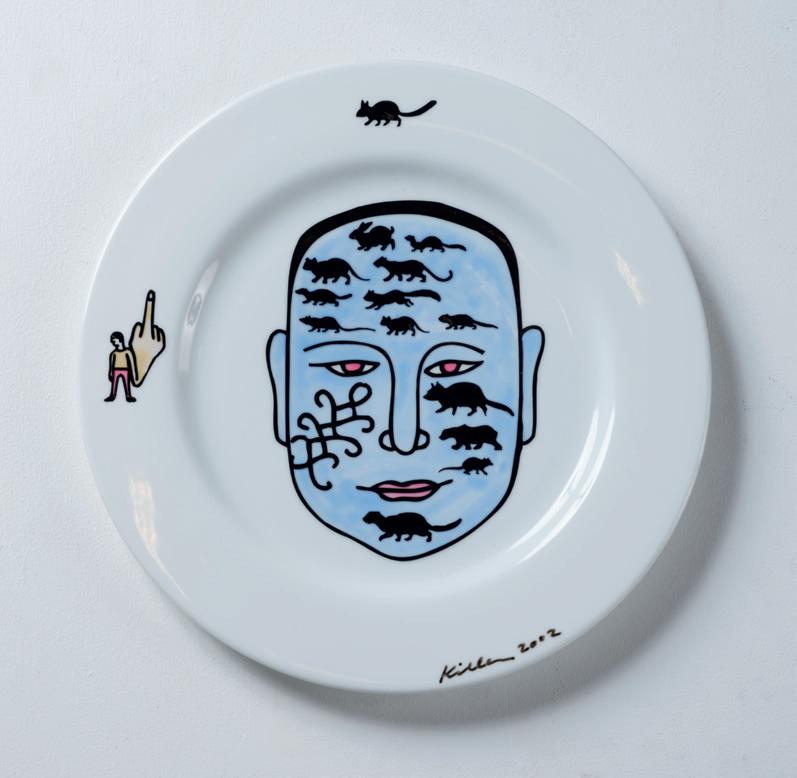
EST $800 $1,600
PROVENANCE
The K' Road Collection, Auckland; Acquired from Ivan Anthony, Auckland.

EST $30,000 $40,000
PROVENANCE
The K' Road Collection, Auckland.
 103 Dale Frank, Doomsday Dwarf Star Hr8210-1 acrylic and varnish on canvas
2000 × 2000mm
103 Dale Frank, Doomsday Dwarf Star Hr8210-1 acrylic and varnish on canvas
2000 × 2000mm
104 Richard Killeen, untitled 2009 vinyl on Longboard, 2/10 1131 × 275 × 150mm (widest points)

EST $10,000 $20,000
PROVENANCE
The K' Road Collection, Auckland.
105 Liz Maw, untitled 2009 vinyl on Longboard, 2/10 1130 × 275 × 150mm (widest points)

EST $10,000 $20,000
PROVENANCE
The K' Road Collection, Auckland.





106 Lonnie Hutchinson, untitled builder's paper 1500 × 780 × 110mm (widest points); 1035 × 800 × 110mm (widest points)
EST $5,500 $7,500
107 Rose Nolan, Help Me to Do Things Differently 2001 oil on hessian and cotton signed and dated 1750 × 865mm (widest points)l
EST $8,000 $10,000
108 Fiona Jack, untitled (from Ōtākaro Plant Parade) 2015 cotton embroidery on velvet; wood 1600 × 1430mm
EST $6,000 $8,000
109 Rozana Lee, Vermillion Dream c2020 wax, dye and acrylic on silk; wood 1180 × 1610 × 400mm (widest points)
EST $2,000 $3,000
110 Gretchen Albrecht, Changes (Blue) 1984 oil on canvas signed, dated and title inscribed 1120 × 1110mm (widest points)
EST $35,000 $55,000

Andrew McLeod is a highly regarded artist whose work is held in major collections throughout the country. He is well known for his skilful intertwining of abstract and figurative approaches to painting, creating hybrid imagery from eclectic sources. He collects, indexes and reassembles images in his paintings, often responding to the work of earlier generations of New Zealand artists. McLeod’s paintings often reference the history of art, especially renaissanceera religious painting or Victorian portraiture. In other works, he engages more with pop culture and contemporary illustration, weaving these references into his wider lexicon of imagery.
The works presented in this selection are a series of gouache paintings on prints of architectural plans. Mainly defined in white on black, the delicately paint images contrasts against the bold linear plans. In some cases McLeod seems to be responding directly to the diagrammatic room plans – such as adding a bed and couch to one scene –while in others the imagery is at odds with the plans, such as the depiction of a horse silhouette and the torso of a man. The visual additions and layers in the works reflect the physical layers of history in an architectural site.

McLeod is an artist who defies genres. His image making is both idiosyncratic and deeply sophisticated. It is informed by a rich understanding of Western art history, a refined awareness of internet culture and digital technology, and a consummate skill with paint. Given the strength and prolific nature of his output, it is easy to forget that McLeod is still only in his midforties. The future is very bright for the artist and his work.






 118 Ralph Hōtere, Deceit and Disillusionment (Te Whiti Series)
1972 oil on paper signed, dated and title inscribed 500 × 390mm
118 Ralph Hōtere, Deceit and Disillusionment (Te Whiti Series)
1972 oil on paper signed, dated and title inscribed 500 × 390mm




 119 Colin McCahon, Tomorrow Will Be the Same But Not as This screenprint on paper indented with McCahon House chop mark 1195 × 750mm EST $13,000 $16,000
120 Bill Hammond, Study 1998 ink on paper signed, dated and title inscribed 750 × 540mm EST $16,000 $20,000
121 Simon Kaan, untitled 2016 watercolour on woodcut on paper signed and dated 770 × 490mm (each panel) EST $2,000 $4,000
119 Colin McCahon, Tomorrow Will Be the Same But Not as This screenprint on paper indented with McCahon House chop mark 1195 × 750mm EST $13,000 $16,000
120 Bill Hammond, Study 1998 ink on paper signed, dated and title inscribed 750 × 540mm EST $16,000 $20,000
121 Simon Kaan, untitled 2016 watercolour on woodcut on paper signed and dated 770 × 490mm (each panel) EST $2,000 $4,000
123 John Reynolds, Nude with Saint George 1994 oil on board signed, dated and title inscribed 2040 × 860mm (each panel)
EST $15,000 $25,000
124 Dick Frizzell, Escape from Salvation Pt II 1986 acrylic on paper signed, dated and title inscribed 750 × 660mm



EST $8,000 $12,000
125 Séraphine Pick, untitled 1993 oil on canvas signed and dated 305 × 305mm


EST $5,000 $8,000
126 Nigel Brown, Belong, belong, belong 2015 acrylic on canvas signed, dated and title inscribed 590 × 590mm
EST $10,000 $15,000
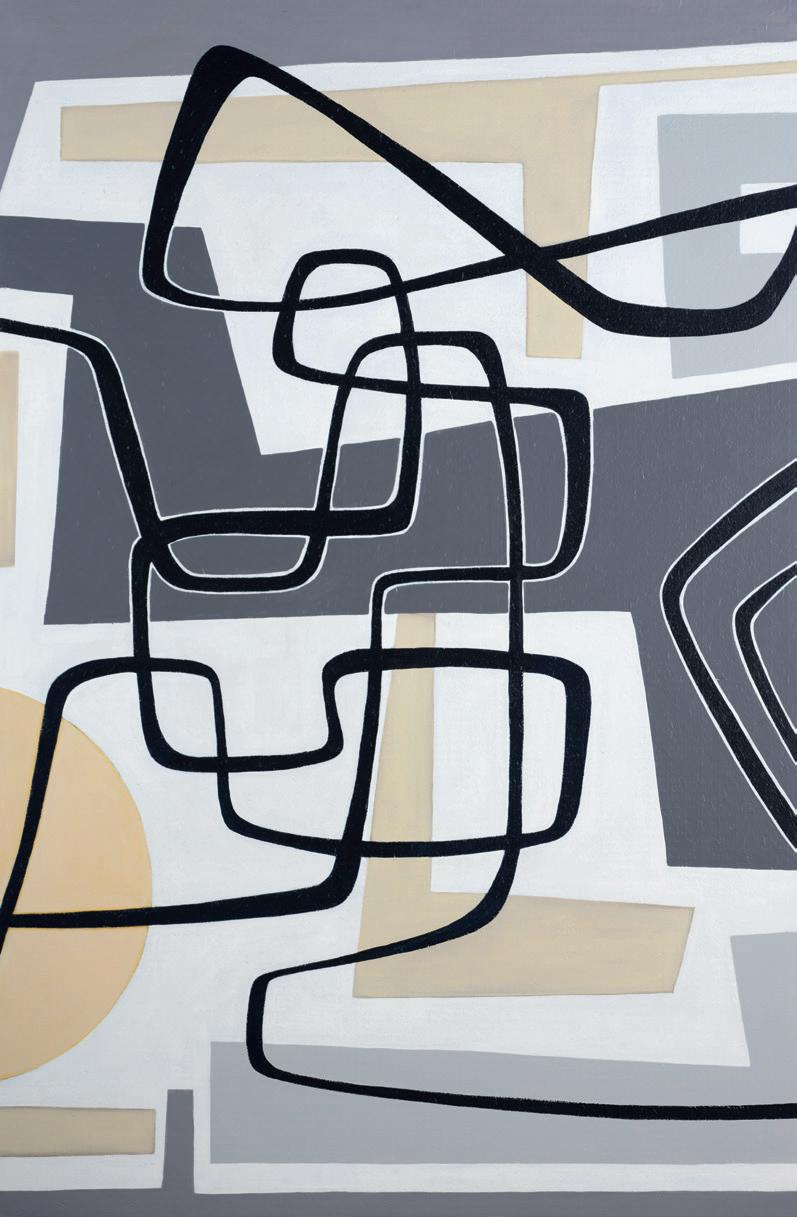



Robyn Kahukiwa (Ngāti Porou) is one of Aotearoa’s pre-eminent Māori painters. She was born in Australia in 1938 and moved to New Zealand in 1955. This move brought about Kahukiwa’s rediscovery of her Māori heritage, which became a central aspect of her art-making practice. Since her first solo exhibition in 1971, Kahukiwa has engaged in a painting practice that passionately articulates her identity as a Māori wāhine. Her work celebrates Māori tikanga and traditional values through powerful portrayal of people and their interconnecting relationships with their whakapapa, legends and the land.
Kahukiwa’s practice began with painting in her kitchen when her children were young. She was ardent about instilling in her tamariki a strong sense of cultural identity, to be proud and knowledgeable of their heritage. Her paintings are often populated with ancestral figures, native birds, plants, and trees. The two works featured in this catalogue were included in the 1999 exhibition Māori Paintings and Sculpture by Robyn Kahukiwa at the gallery Rich Women of Zurich in London. The pair are striking portraits of a Māori man and a Māori woman painted in a style distinctive to the artist. The strong colours and large scale of the works feel almost mural like — commemorating the revered subjects they portray. These works exemplify the bold imagery
Kahukiwa is known for and cement her as an artist of great stature, and a leading voice in contemporary Māori art.

 131 Robyn Kahukiwa, Tane 1995 oil on canvas signed and dated 2180 × 1520mm
EST $8,000 $12,000
131 Robyn Kahukiwa, Tane 1995 oil on canvas signed and dated 2180 × 1520mm
EST $8,000 $12,000
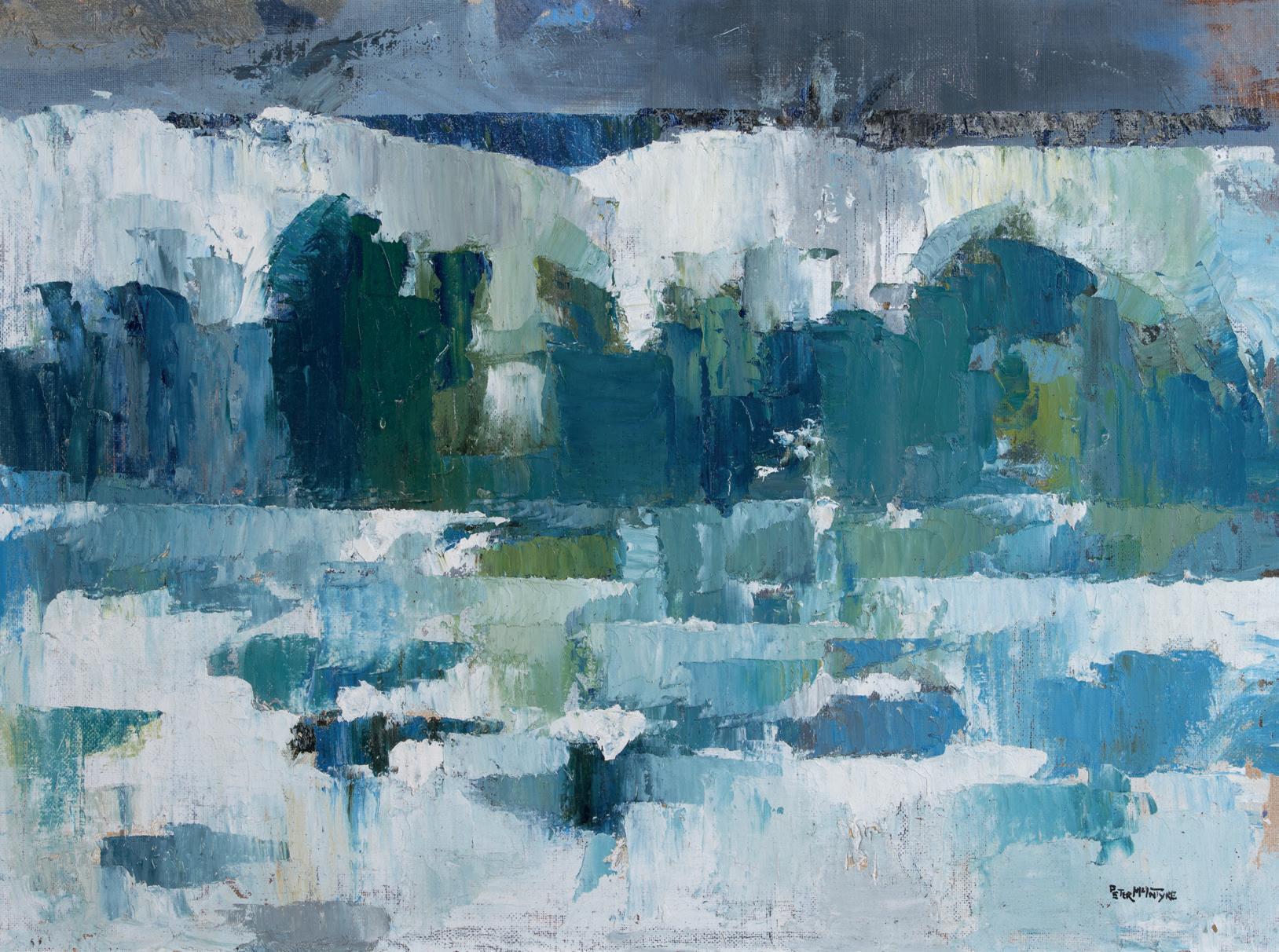



 135 Russell Clark, untitled (Solomon Islands) watercolour on paper signed 440 × 545mm EST $10,500 $17,500
136 W H Allen, Gloucestershire Landscape oil on canvas signed 350 × 500mm EST $1,000 $2,000
135 Russell Clark, untitled (Solomon Islands) watercolour on paper signed 440 × 545mm EST $10,500 $17,500
136 W H Allen, Gloucestershire Landscape oil on canvas signed 350 × 500mm EST $1,000 $2,000
Ian Scott’s so-called ‘Girlie Paintings’ of the late 1960s and early 1970s hold an intriguing place in the history of New Zealand art. They are entirely unlike the artist’s later abstract ‘lattice’ paintings, which are his betterknown works. They are also unlike anything else in New Zealand art before or since. These works picture glamorous young women in modern outfits and dynamic poses, set against wildly abstracted landscapes or stark interiors.









141 Wayne Youle, Just a Quick Note 2014 acrylic on cardboard signed and dated 255 × 370mm
EST $3,500 $5,500
142 Wayne Youle, Written in Stone 2014 acrylic on cardboard signed and dated 380 × 290mm
EST $3,500 $5,500
143 Wayne Youle, Sincerely, Faithfully, Respectfully, Regretfully acrylic on cardboard signed and dated 425 × 360mm
EST $3,500 $5,500
144 Wayne Youle, Hugs and Kisses 2015 acrylic on cardboard signed and dated 365 × 275mm
EST $3,500 $5,500
145 After Andy Warhol, Double Elvis 2022 screenprint on board, printer's proof 360 × 360mm
EST $2,800 $4,800
NOTE
This work is accompanied by a Sunday B Morning Certificate of Authenticity.
146 After Andy Warhol, Moonwalk - Yellow 11.404 2020 screenprint on board 950 × 950mm
EST $4,000 $6,000
NOTE
This work is accompanied by a Sunday B Morning Certificate of Authenticity.
147 After Andy Warhol, Reigning Queen (Queen Elizabeth II of the United Kingdom) screenprint on board 950 × 760mm

EST $4,000 $6,000
NOTE
This work is accompanied by a Sunday B Morning Certificate of Authenticity.
148 Jeff Koons, Puppy 1999 screenprint on paper, 20/93 signed and dated 1060 × 645mm

EST $6,000 $10,000
149 Gregor Kregar, Thinker Gnome stainless steel 1190 × 460 × 200mm (widest points)
EST $10,000 $18,000

150 Don Binney, Lake Omapere 1963 charcoal on paper dated and title inscribed




154 Ralph Hōtere, Music Faculty Auckland University 1978 graphite on paper signed, dated and title inscribed 575 × 375mm


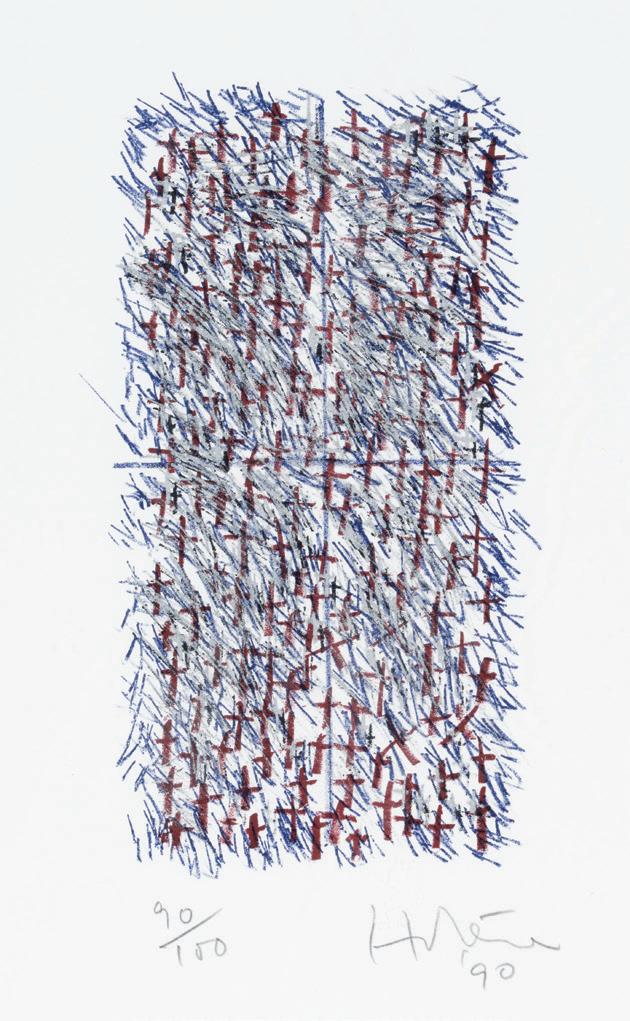

EST $3,000 $5,000
PROVENANCE Estate of Ans Westra, Wellington.
155 Ralph Hōtere, untitled 1990 lithograph on paper, 22/100 signed and dated 720 × 165mm
EST $4,000 $6,000
156 Ralph Hōtere, Matauri Bay, Black Rainbow 1988 lithograph on paper, 15/30 signed, dated and title inscribed 550 × 440mm
EST $3,000 $4,500
157 Ralph Hōtere, Matauri Bay 1988 lithograph on paper signed, dated and title inscribed 490 × 330mm
EST $4,000 $6,000
158 Ralph Hōtere, Portrait of Andrea 1986 graphite on paper signed, dated and title inscribed 300 × 230mm


EST $4,000 $6,000
159 Francis Upritchard, untitled watercolour on paper 600 × 460mm
EST $2,500 $3,500

Terms & Conditions
paid for in full before it will be released to the purchaser or his/her agreed expertising committee or specialist. Payments received for such items will be held “in trust” for up to 90 days or earlier, if the issue of authenticity has been resolved more quickly. Extensions must be requested before the auction.
Foreign buyers should note that all transactions are in New Zealand Dollars so there may be a small exchange rate risk. The costs associated with acquiring a good opinion or certificate will be carried by the purchaser. If the item turns out to be forged or otherwise incorrectly described, all reasonable costs will be borne by the vendor.
3.3. Buyers Responsibility
All property is sold “as is” without representation or warranty of any kind by Webb’s or the Seller. Buyers are responsible for satisfying themselves concerning the condition of the property and the matters referred to in the catalogue by requesting a condition report.
convenience of those clients who are unable to attend the auction in person. If we receive identical written bids on a particular lot, and at the auction these are the highest bids on that lot, then the lot will be sold to the person whose written bid was received and accepted first. Execution of written bids is a free service undertaken subject to other commitments at the time of the sale and we do not accept liability for failing to execute a written bid or for errors or omissions which may arise. It is the bidder’s responsibility to check with Webb’s after the auction if they were successful. Unlimited or “Buy” bids will not be accepted.
4.6. Telephone Bids
1. Background to the Terms used in these Conditions
The conditions that are listed below contain terms that are used regularly and may need explanation. They are as follows:
“the Buyer” means the person with the highest bid accepted by the Auctioneer.
“the Lot” means any item depicted within the sale for auction and in particular the item or items described against any lot number in the catalogue.
“the Hammer price” means the amount of the highest bid accepted by the auctioneer in relation to a lot.
“the Buyer’s Premium” means the charge payable by the Buyer to the auction house as a percentage of the hammer price.
“the Reserve” means the lowest amount at which Webb’s has agreed with the Seller that the lot can be sold.
“Forgery” means an item constituting an imitation originally conceived and executed as a whole, with a fraudulent intention to deceive as to authorship, origin, age, period, culture or source, where the correct description as to such matters is not reflected by the description in the catalogue. Accordingly, no lot shall be capable of being a forgery by reason of any damage or restoration work of any kind (Including re-painting).
“the insured value” means the amount that Webb’s in its absolute discretion from time to time shall consider the value for which a lot should be covered for insurance (whether or not insurance is arranged by Webb’s).
All values expressed in Webb’s catalogues (in any format) are in New Zealand Dollars (NZD$). All bids, “hammer price”, “reserves”, “Buyers Premium” and other expressions of value are understood by all parties to be in New Zealand Dollars (NZD$) unless otherwise specified.
2. Webb’s Auctions as Agent
Except as otherwise stated, Webb’s acts
as agent for the Seller. The contract for the sale of the property is therefore made between the Seller and the Buyer.
3. Before the Sale
3.1. Examination of Property Prospective Buyers are strongly advised to examine in person any property in which they are interested before the Auction takes place. Neither Webb’s nor the Seller provides any guarantee in relation to the nature of the property apart from the Limited warranty in the paragraph below.
The property is otherwise sold “AS IS”
3.2. Catalogue and Other Descriptions
All statements by Webb’s in the catalogue entry for the property or in the condition report, or made orally or in writing elsewhere, are statements of opinion and are not to be relied upon as statements of fact. Such statements do not constitute a representation, warranty or assumption of liability by Webb’s of any kind. References in the catalogue entry to the condition report to damage or restoration are for guidance only and should be evaluated by personal inspection by the bidder or a knowledgeable representative. The absence of such a reference does not imply that an item is free from defects or restoration, nor does a reference to particular defects imply the absence of any others. Estimates of the selling price should not be relied on as a statement that this is the price at which the item will sell or its value for any other purpose. Neither Webb’s nor The Seller is responsible for any errors or omissions in the catalogue or any supplemental material.
Images are measured height by width (sight size). Illustrations are provided only as a guide and should not be relied upon as a true representation of colour or condition. Images are not shown at a standard scale. Mention is rarely made of frames (which may be provided as supplementary images on the website) which do not form part of the lot as described in the printed catalogue.
An item bought “on Extension” must be
No lot to be rejected if, subsequent to the sale, it has been immersed in liquid or treated by any other process unless the Auctioneer’s permission to subject the lot to such immersion or treatment has first been obtained in writing.
4. At the Sale
4.1. Refusal of Admission
Webb’s reserves the right at our complete discretion to refuse admission to the auction premises or participation in any auction and to reject any bid.
4.2. Registration Before Bidding
Any prospective new buyer must complete and sign a registration form and provide photo identification before bidding. Webb’s may request bank, trade or other financial references to substantiate this registration.
4.3. Bidding as a Principal
When making a bid, a bidder is accepting personal liability to pay the purchase price including the buyer’s premium and all applicable taxes, plus all other applicable charges, unless it has been explicitly agreed in writing with Webb’s before the commencement of the sale that the bidder is acting as agent on behalf of an identified third party acceptable to Webb’s and that Webb’s will only look to the principal for payment.
4.4. International Registrations
All International clients not known to Webb’s will be required to scan or fax through an accredited form of photo identification and pay a deposit at our discretion in cleared funds into Webb’s account at least 24 hours before the commencement of the auction. Bids will not be accepted without this deposit. Webb’s also reserves the right to request any additional forms of identification prior to registering an overseas bid.
This deposit can be made using a credit card, however the balance of any purchase price in excess of $5,000 cannot be charged to this card without prior arrangement.
This deposit is redeemable against any auction purchase and will be refunded in full if no purchases are made.
4.5. Absentee Bids
Webb’s will use reasonable efforts to execute written bids delivered to us AT LEAST 24 Hours before the sale for the
Priority will be given to overseas and bidders from other regions. Please refer to the catalogue for the Telephone Bids form. Arrangements for this service must be confirmed AT LEAST 24 HOURS PRIOR to the auction commencing. Webb’s accepts no responsibility whatsoever for any errors or failure to execute bids. In telephone bidding the buyer agrees to be bound by all terms and conditions listed here and accepts that Webb’s cannot be held responsible for any miscommunications in the process. The success of telephone bidding cannot be guaranteed due to circumstances that are unforeseen. Buyers should be aware of the risk and accept the consequences should contact be unsuccessful at the time of Auction. You must advise Webb’s of the lots in question, and you will be assumed to be a buyer at the minimum price of 75% of estimate (i.e. reserve) for all such lots. Webb’s will advise Telephone Bidders who have registered at least 24 hours before the auction of any relevant changes to descriptions, withdrawals, or any other sale room notices.
4.7. Online Bidding
Webb’s offers an online bidding service. When bidding online the buyer agrees to be bound by all terms and conditions listed here by Webb’s.
Webb’s accepts no responsibility for any errors, failure to execute bids or any other miscommunications regarding this process. It is the online bidder’s responsibility to ensure the accuracy of the relevant information regarding bids, lot numbers and contact details. Webb’s does not charge for this service.
4.8. Reserves
Unless otherwise indicated, all lots are offered subject to a reserve, which is the confidential minimum price below which the Lot will not be sold. The reserve will not exceed the low estimate printed in the catalogue. The auctioneer may open the bidding on any Lot below the reserve by placing a bid on behalf of the Seller. The auctioneer may continue to bid on behalf of seller up to the amount of the reserve, either by placing consecutive bids or by placing bids in response to other bidders.
4.9. Auctioneers Discretion
The Auctioneer has the right at his/ her absolute and sole discretion to refuse any bid, to advance the bidding according to the following indicative steps:
Increment Dollar Range Amount $20 $0–$500 $50 $500–$1,000 $100 $1,000–$2,000 $200 $2,000–$5,000 $500 $5,000–$10,000 $1,000 $10,000–$20,000 $2,000 $20,000–$50,000
The terms and conditions of sale listed here contain the policies of Webb’s (Webb Fine Art). They are the terms on which Webb’s (Webb Fine Art) and the Seller contract with the Buyer. They may be amended by printed Saleroom Notices or oral announcements made before and during the sale. By bidding at auction you agree to be bound by these terms.
Terms & Conditions
$5,000 $50,000 – $100,000 $10,000 $100,000–$200,000 $20,000 $200,000–$500,000 $50,000 $500,000–$1,000,000
Absentee bids must follow these increments and any bids that don’t follow the steps will be rounded up to the nearest acceptable bid.
5. After the Sale
5.1. Buyers Premium
In addition to the hammer price, the buyer agrees to pay to Webb’s the buyer’s premium. The buyer’s premium is 19.5% of the hammer price plus GST. (Goods and Services Tax) where applicable.
5.2. Payment and Passing of Title
The buyer must pay the full amount due (comprising the hammer price, buyer’s premium and any applicable taxes and GST) not later than 2 days after the auction date.
The buyer will not acquire title to the lot until Webb’s receives full payment in cleared funds, and no goods under any circumstances will be released without confirmation of cleared funds received. This applies even if the buyer wishes to send items overseas.
Payment can be made by direct transfer, cash (not exceeding NZD$5,000, if wishing to pay more than NZD$5,000 then this must be deposited directly into a Bank of New Zealand branch and bank receipt supplied) and EFTPOS (please check the daily limit). Payments can be made by debit card or credit card in person with a 2.2% merchant fee for Visa, Mastercard and Paywave, and 3.3% for American Express. Invoices that are in excess of $5,000 and where the card holder is not present, cannot be charged to a credit card without prior arrangement. Cheques are no longer accepted.
The buyer is responsible for any bank fees and charges applicable for the transfer of funds into Webb’s account.
5.3. Collection of Purchases & Insurance
Webb’s is entitled to retain items sold until all amounts due to us have been received in full in cleared funds. Subject to this, the Buyer shall collect purchased lots within 2 days from the date of the sale unless otherwise agreed in writing between Webb’s and the Buyer.
At the fall of the hammer, insurance is the responsibility of the purchaser.
5.4. Packing, Handling and Shipping
Webb’s will be able to suggest removals companies that the buyer can use but takes no responsibility whatsoever for the actions of any recommended third party. Webb’s can pack and handle goods purchased at the auction by agreement and a charge will be made for this service. All packing, shipping, insurance, postage & associated charges will be borne by the purchaser.
5.5. Permits, Licences and Certificates
Under The Protected Objects Act 1975, buyers may be required to obtain a licence for certain categories of items in a sale from the Ministry of Culture & Heritage, PO Box 5364, Wellington.
5.6. Remedies for Non-Payment
If the Buyer fails to make full payment immediately, Webb’s is entitled to exercise one or more of the following
rights or remedies (in addition to asserting any other rights or remedies available under the law)
5.6.1. to charge interest at such a rate as we shall reasonably decide.
5.6.2. to hold the defaulting Buyer liable for the total amount due and to commence legal proceedings for its recovery along with interest, legal fees and costs to the fullest extent permitted under applicable law.
5.6.3. to cancel the sale.
5.6.4. to resell the property publicly or privately on such terms as we see fit.
5.6.5. to pay the Seller an amount up to the net proceeds payable in respect of the amount bid by the defaulting Buyer. In these circumstances the defaulting Buyer can have no claim upon Webb’s in the event that the item(s) are sold for an amount greater than the original invoiced amount.
5.6.6. to set off against any amounts which Webb’s may owe the Buyer in any other transactions, the outstanding amount remaining unpaid by the Buyer.
5.6.7. where several amounts are owed by the Buyer to us, in respect of different transactions, to apply any amount paid to discharge any amount owed in respect of any particular transaction, whether or not the Buyer so directs.
5.6.8. to reject at any future auction any bids made by or on behalf of the Buyer or to obtain a deposit from the Buyer prior to accepting any bids.
5.6.9. to exercise all the rights and remedies of a person holding security over any property in our possession owned by the Buyer whether by way of pledge, security interest or in any other way, to the fullest extent permitted by the law of the place where such property is located. The Buyer will be deemed to have been granted such security to us and we may retain such property as collateral security for said Buyer’s obligations to us.
5.6.10. to take such other action as Webb’s deem necessary or appropriate.
If we do sell the property under paragraph (4), then the defaulting Buyer shall be liable for payment of any deficiency between the total amount originally due to us and the price obtained upon reselling as well as for all costs, expenses, damages, legal fees and commissions and premiums of whatever kinds associated with both sales or otherwise arising from the default.
If we pay any amount to the Seller under paragraph (5) the Buyer acknowledges that Webb’s shall have all of the rights of the Seller, however arising, to pursue the Buyer for such amount.
5.7. Failure to Collect Purchases
Where purchases are not collected within 2 days from the sale date, whether or not payment has been made, we shall be permitted to remove the property to a warehouse at the buyer’s expense, and only release the items after payment in full has been made of removal, storage handling, insurance and any other costs incurred, together with payment of all other amounts due to us.
6. Extent of Webb’s Liability
Webb’s agrees to refund the purchase price in the circumstances of the Limited Warranty set out in paragraph 7 below. Apart from that, neither the Seller nor we, nor any of our employees or agents are responsible for the correctness of any statement of whatever kind concerning any lot, whether written or oral, nor for any other errors or omissions in description or for any faults or defects in any lots. Except as stated in paragraph 7 below, neither the Seller, ourselves, our officers, agents or employees give any representation warranty or guarantee or assume any liability of any kind in respect of any lot with regard to merchantability, fitness for a particular purpose, description, size, quality, condition, attribution, authenticity, rarity, importance, medium, provenance, exhibition history, literature or historical relevance. Except as required by local law any warranty of any kind is excluded by this paragraph.
7. Limited Warranty
Subject to the terms and conditions of this paragraph, the Seller warrants for the period of thirty days from the date of the sale that any property described in this catalogue (noting such description may be amended by any saleroom notice or announcement) which is stated without qualification to be the work of a named author or authorship is authentic and not a forgery. The term “Author” or “authorship” refers to the creator of the property or to the period, culture, source, or origin as the case may be, with which the creation of such property is identified in the catalogue.
The warranty is subject to the following: it does not apply where a) the catalogue description or saleroom notice corresponded to the generally accepted opinion of scholars and experts at the date of the sale or fairly indicated that there was a conflict of opinions, or b) correct identification of a lot can be demonstrated only by means of a scientific process not generally accepted for use until after publication of the catalogue or a process which at the date of the publication of the catalogue was unreasonably expensive or impractical or likely to have caused damage to the property.
the benefits of the warranty are not assignable and shall apply only to the original buyer of the lot as shown on the invoice originally issued by Webb’s when the lot was sold at Auction.
the Original Buyer must have remained the owner of the lot without disposing of any interest in it to any third party.
The Buyer’s sole and exclusive remedy against the Seller in place of any other remedy which might be available, is the cancellation of the sale and the refund of the original purchase price paid for the lot less the buyer’s premium which is non-refundable. Neither the Seller
nor Webb’s will be liable for any special, incidental nor consequential damages including, without limitation, loss of profits.
The Buyer must give written notice of claim to us within thirty days of the date of the Auction. The Seller shall have the right, to require the Buyer to obtain two written opinions by recognised experts in the field, mutually acceptable to the Buyer and Webb’s to decide whether or not to cancel the sale under warranty.
the Buyer must return the lot to Seller in the same condition that it was purchased.
8. Severability
If any part of these Conditions of Sale is found by any court to be invalid, illegal or unenforceable, that part shall be discounted, and the rest of the Conditions shall continue to be valid to the fullest extent permitted by law.
9. Copyright
The copyright in all images, illustrations and written material produced by Webb’s relating to a lot including the contents of this catalogue, is and shall remain the property at all times of Webb’s and shall not be used by the Buyer, nor by anyone else without our prior written consent. Webb’s and the Seller make no representation or warranty that the Buyer of a property will acquire any copyright or other reproduction rights in it.
10. Law and Jurisdiction
These terms and conditions and any matters concerned with the foregoing fall within the exclusive jurisdiction of the courts of New Zealand, unless otherwise stated.
11. Pre-Sale Estimates
Webb’s publishes with each catalogue our opinion as to the estimated price range for each lot. These estimates are approximate prices only and are not intended to be definitive. They are prepared well in advance of the sale and may be subject to revision. Interested parties should contact Webb’s prior to auction for updated pre-sale estimates and starting prices.
12. Sale Results
Webb’s will provide auction results, which will be available as soon as possible after the sale. Results will include buyer’s premium. These results will be posted at www.webbs.co.nz.
13. Goods and Service Tax
GST is applicable on the hammer price in the case where the seller is selling property that is owned by an entity registered for GST. GST is also applicable on the hammer price in the case where the seller is not a New Zealand resident. These lots are denoted by a dagger symbol † placed next to the estimate. GST is also applicable on the buyer’s premium.
120 Pages Index of Artists











160 Lots








































